
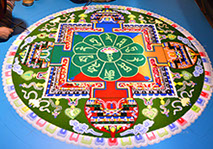



English
Deutsch
One of my favorite cultural traditions is the Tibetan Buddhist Sand Mandala. I had the pleasure to photograph and film seven different sand mandalas created by monks.
The Tibetan Buddhism is a very old philosophy, which was strongly influenced by the even older tradition of Bon (It is almost indistinguishable from Tibetan Buddhism in terms of doctrines and rituals, but differs in the religious authority and history it accepts. The Tibetan people and rulers patronized the Bon religion through the eighth century CE, according to Bon belief, when royal support switched to Buddhism.).
The Impermanence, also called Anicca or Anitya, is one of the essential doctrines in Buddhism. Anicca doctrine is one of the foundational premises of Buddhism, which asserts that all physical and mental events are not metaphysically real, that they are not constant or permanent, they come into being and dissolve.
There are two traditions in Tibetan Buddhism, which are strongly connected to the impermanence: 1-The sky burial, 2-The sand mandala
For Tibetan Buddhists, sky burial is an example of instructional teaching on the impermanence of life. Jhator is considered an act of generosity on the part of the deceased, since the deceased and his/her surviving relatives are providing food to sustain living beings. The Tibetan sky-burials appear to have evolved from ancient practices. These practices most likely came out of practical considerations, but they could also be related to more ceremonial practices similar to the suspected sky burial evidence found at Göbekli Tepe (11,500 years before present, it is a stone-age mountain sanctuary. Radiocarbon dating as well as comparative, stylistical analysis indicate that it is the oldest religious site yet discovered anywhere.) and Stonehenge (4,500 years BP).
Mandala is a Sanskrit word. In Tibetan they use the word ‘Chilkhor‘, Chil means ‘center‘ and ‘Khor‘ means ‘circumference‘. It denotes the complete cosmogram of the deity it represents. It is a spiritual and ritual symbol, diagrammatic picture, highly technical, architectural and precise, representing the universe, with the Mount Meru in the center and an idealized Tantric Buddhist, Hindu or Bon meditational Deity. They are commonly used as an aid to meditation. Mount Meru is a mythical, sacred mountain with five peaks and is considered to be the center of all universes (physical, metaphysical & spiritual). The ancient Buddhists thought of the universe as essentially flat, with the Meru Mountain at the center of all existence. This universe was made of many different planes of existence and three realms (dhatus). The three realms are: Arupyadhatu (the formless realm), Rupadhatu (the realm of form), Kamadhatu (the realm of desire). Each of these realms is further divided into multiple worlds where different kinds of beings live.
Mandalas are secret and traditionally only fully available as wisdom to the initiated in mandala monk. The center of the mandala is the essence of the universe in which a fully enlightened entity resides, the main deity. This deity is surrounded by less important deities whose holiness and importance decreases as one moves further away from the central figure. The outer circle, or perimeter, is called ‘Meri Khorlo‘, meaning ‘Fire Mountain‘. In the mandala, the outer circle of fire usually symbolizes wisdom. The ring of eight charnel grounds represents the Buddhist exhortation to be always mindful of death and the impermanence in samsara (Samsara is the human world, suffering-laden cycle of life, death, and rebirth, without beginning or end.)
A Mandala can be seen as the ‘world of existence’ or celestial residence palace in which the deity resides.
During the creation a lot of positive energy is aroused and concentrates in that particular spot.
My friend Lama Ngawang Kunga Bista told me the most important element of the mandala's creation is your current mental state.
The mandala is "a support for the meditating person"
In modern days the sand mandala is made from hand colored sand. The monks create a mandala in 3-6 days. Every day they start with a prayer. A sand mandala is ritualistically dismantled once it has been completed. A part of the sand is given to visitors, another part will be ritually put in a river (lake, moving water). This symbolizes the ephemerality of life and the world. The water brings the sand to the land, animals drink from the water, the sacred power of the ritual goes back to nature bringing peace, healing, compassion...
Historically, the mandala was not created with natural, dyed sand, but granules of crushed colored stone. In modern times, plain white stones are ground down and dyed with opaque inks to achieve the same effect.
Eine der schönsten Traditionen für mich ist das tibetisch-buddhistische Sandmandala. Ich hatte das Vergnügen, sieben verschiedene Sandmandalas zu fotografieren und zu filmen.
Der tibetische Buddhismus ist eine sehr alte Philosophie, die stark von der noch älteren Tradition des Bön beeinflusst wurde (Bön unterscheidet sich kaum vom tibetischen Buddhismus in Bezug auf Lehren und manche Rituale, unterscheidet sich aber in der religiösen Autorität und der Geschichte, die von Bön akzeptiert und erzählt wurde. Das tibetische Volk und Herrscher praktizierten die Bön Religion bis zum achten Jahrhundert nach Bon-Glauben, als die königliche Unterstützung zum Buddhismus wechselte. Die Bön Tradition wird von den Bönpo völlig anders erzählt und interpretiert, als es in buddhistischen Quellen der Fall ist.)
Die Vergänglichkeit, auch Anicca oder Anitya genannt, ist eine der wesentlichen Lehren im Buddhismus. Die Anicca-Lehre ist eine der Grundvoraussetzungen des Buddhismus, die besagt, dass alle physischen und mentalen Ereignisse nicht metaphysisch real sind, dass sie nicht konstant oder permanent sind, sondern entstehen und sich auflösen.
Es gibt zwei Traditionen im tibetischen Buddhismus, die eng mit der Vergänglichkeit verbunden sind: 1 - Das Himmelsbegräbnis (Himmelsbestattung, Luftbestattung), 2 - Das Sandmandala.
Für tibetische Buddhisten ist die Himmelsbestattung ein Beispiel für eine lehrreiche Lehre über die Vergänglichkeit des Lebens. Jhator wird als Akt der Großzügigkeit des Verstorbenen angesehen, da der Verstorbene und seine Verwandten Nahrung zur Verfügung stellen, um Lebewesen zu ernähren. Die tibetischen Himmelsbestattungen scheinen sich aus alten Praktiken entwickelt zu haben. Diese Praktiken kamen höchstwahrscheinlich aus praktischen Gründen, aber sie konnten auch mit zeremoniellen Praktiken in Verbindung gebracht werden, die den vermuteten Himmels Begräbnissen bei Göbekli Tepe ähnlich sind (vor 11.500 Jahren. Es ist ein steinzeitliches Bergheiligtum. Radiokarbondatierung als auch vergleichende, stilistische Analyse zeigen, dass es die älteste religiöse Stätte ist, die bisher überall entdeckt wurde.) und Stonehenge (4500 Jahre v. Chr.)
Mandala ist ein Sanskrit-Wort. Auf Tibetisch verwenden sie das Wort "Chilkhor", Chil bedeutet "Zentrum" und "Khor" bedeutet "Umfang". Es bezeichnet das vollständige Kosmogramm der Gottheit, die es repräsentiert. Es ist ein spirituelles und rituelles Symbol, ein schematisches Bild, hoch technisch, architektonisch und präzise, das Universum darstellend, mit dem Berg Meru im Zentrum und einer idealisierten tantrisch-buddhistischen, Hindu- oder Bon-Meditationsgottheit. Sie werden allgemein als Hilfe für die Meditation verwendet. Der Berg Meru ist ein mythischer, heiliger Berg mit fünf Gipfeln und gilt als das Zentrum aller Universen (physisch, metaphysisch und spirituell). Die alten Buddhisten dachten an das Universum als im Wesentlichen flach, mit dem Meru Berg im Zentrum aller Existenz. Dieses Universum bestand aus vielen verschiedenen Ebenen der Existenz und drei Reiche (dhatus). Die drei Reiche sind: Arupyadhatu (das formlose Reich), Rupadhatu (das Reich der Form), Kamadhatu (das Reich des Verlangens). Jedes dieser Bereiche ist weiter in mehrere Welten unterteilt, in denen verschiedene Arten von Lebewesen existieren.
Mandalas sind geheim und traditionell nur als Weisheit für die Initiierten im Mandala-Mönche verfügbar. Das Zentrum des Mandalas ist die Essenz des Universums, in dem sich eine vollständig erleuchtete Einheit befindet, die Hauptgottheit. Diese Gottheit ist von weniger wichtigen Gottheiten umgeben, deren Heiligkeit und Wichtigkeit abnimmt, je weiter man sich von der zentralen Figur entfernt. Der äußere Kreis oder Perimeter heißt "Meri Khorlo" und bedeutet "Feuerberg". Der äußere Feuerkreis symbolisiert im Mandala meist Weisheit. Der Ring von acht charnel grounds (keine Deutsche Übersetzung) stellt die buddhistische Sicht dar, immer auf den Tod und die Unbeständigkeit im Samsara bedacht zu sein (Samsara ist die menschliche Welt, leidender Kreislauf von Leben, Tod und Wiedergeburt, ohne Anfang und Ende).
Ein Mandala kann als "Welt der Existenz" oder himmlischer Residenzpalast betrachtet werden, in dem die Gottheit residiert. Während der Entstehung wird viel positiver Energie geweckt und versammelt an dieser Stelle.
Mein Freund Lama Ngawang Kunga Bista sagte mir, das wichtigste Element bei der Entstehung des Mandalas sei dein gegenwärtiger persönlichen positiven Geisteszustand des Mönches.
Das Mandala ist "eine Unterstützung für die meditierende Person"
In modernen Zeiten ist das Sand-Mandala aus handbemaltem Sand gefertigt. Die Mönche erstellen in 3-6 Tagen ein Mandala. Jeden Tag beginnen sie mit einem Gebet. Ein Sandmandala wird nach seiner Fertigstellung rituell aufgelöst. Ein Teil des Sandes wird den Besuchern gegeben, ein anderer Teil wird rituell in einen Fluss (See, bewegtes Wasser) geworfen. Dies symbolisiert die Vergänglichkeit des Lebens und der Welt. Das Wasser bringt den Sand ins Land, ins Meer, Tiere trinken aus dem Wasser oder leben im Wasser, die heilige Kraft des Rituals geht zurück in die Natur und bringt Frieden, Heilung, Mitgefühl...
Historisch gesehen, wurde das Mandala nicht mit gefärbtem Sand, sondern mit Granulat aus zerkleinertem Stein gemacht. In der heutigen Zeit werden einfache weiße Steine abgeschliffen und mit Pigmenten eingefärbt, um den gleichen Effekt zu erzielen.
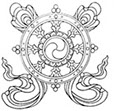
Medicine Buddha Mandala
September 2018 in Vienna, Austria
Mönche aus dem Kloster Ganden Jangtse / Monks from the monastery Ganden Jangtse
Geshe Lobsang SOEPA, Geshe Ngawang Dealam and Ven. Gyaltsen
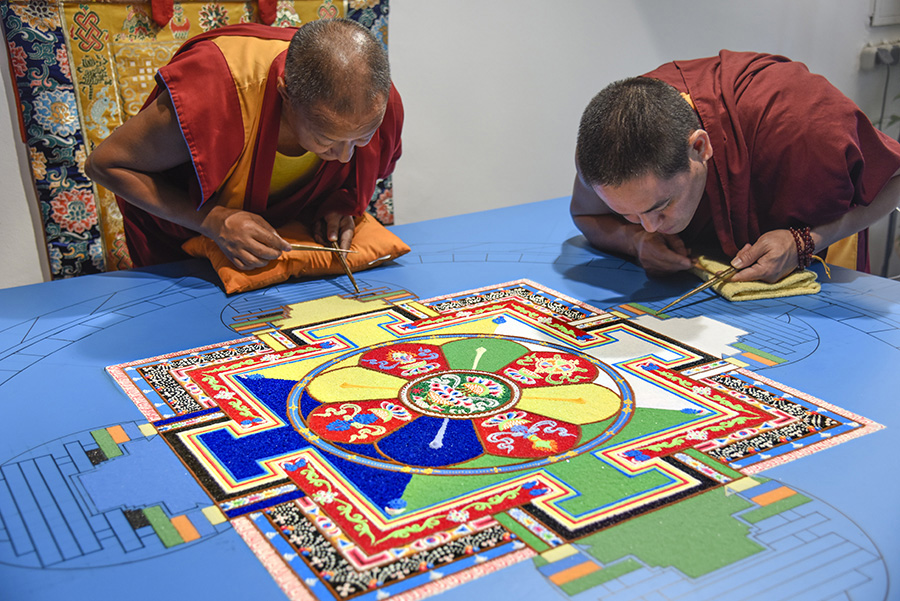
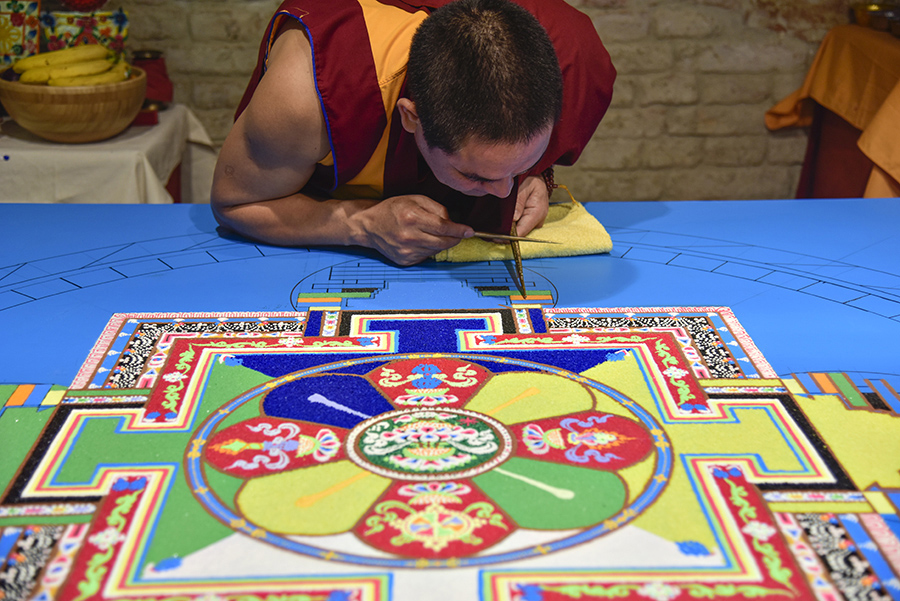
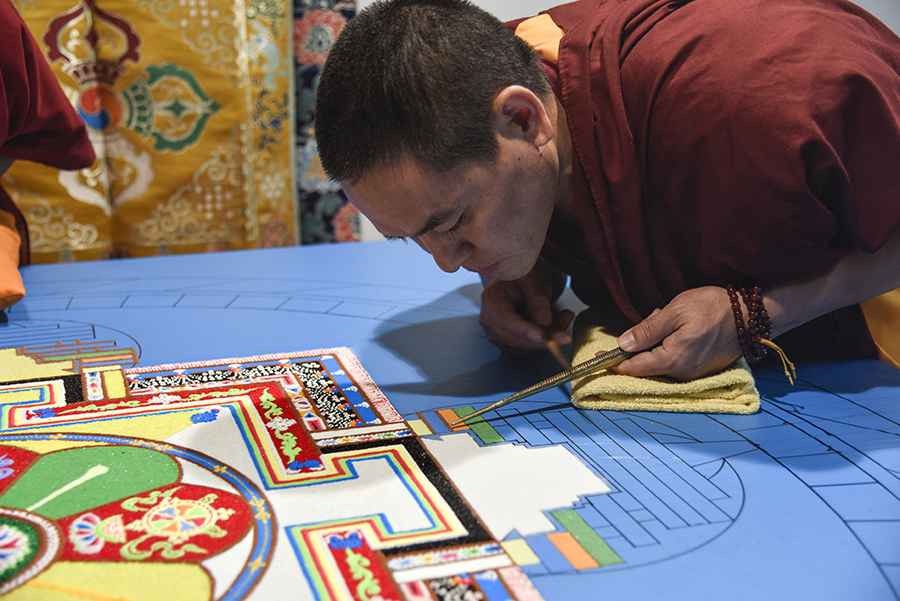
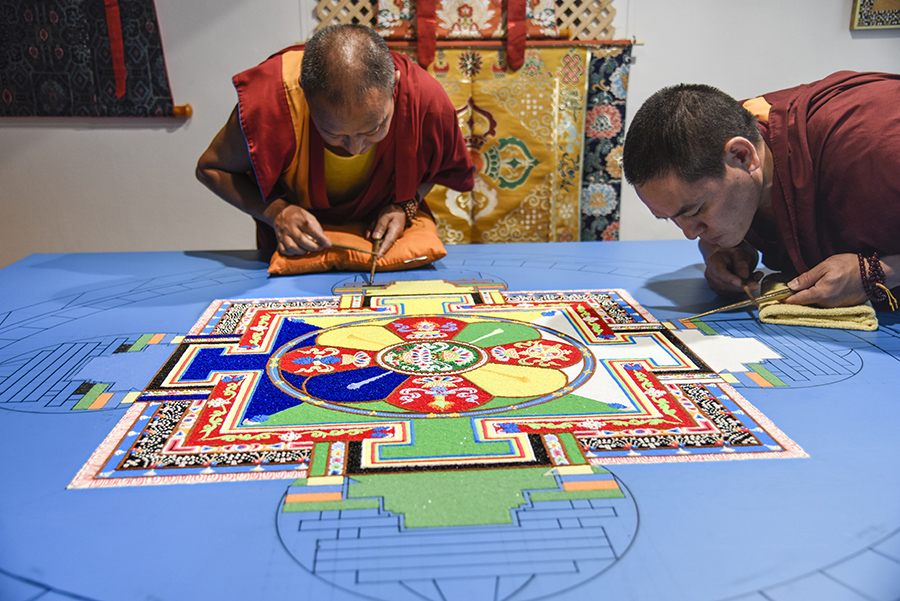
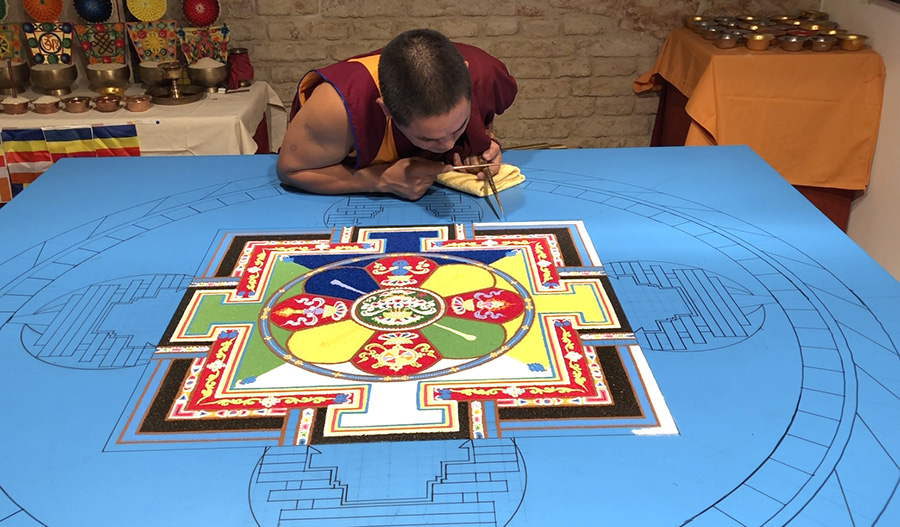
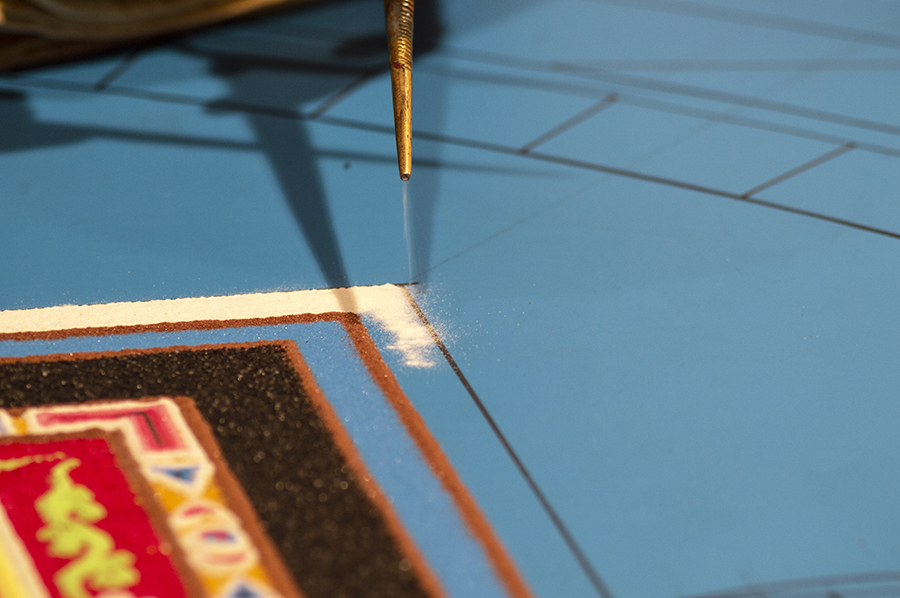
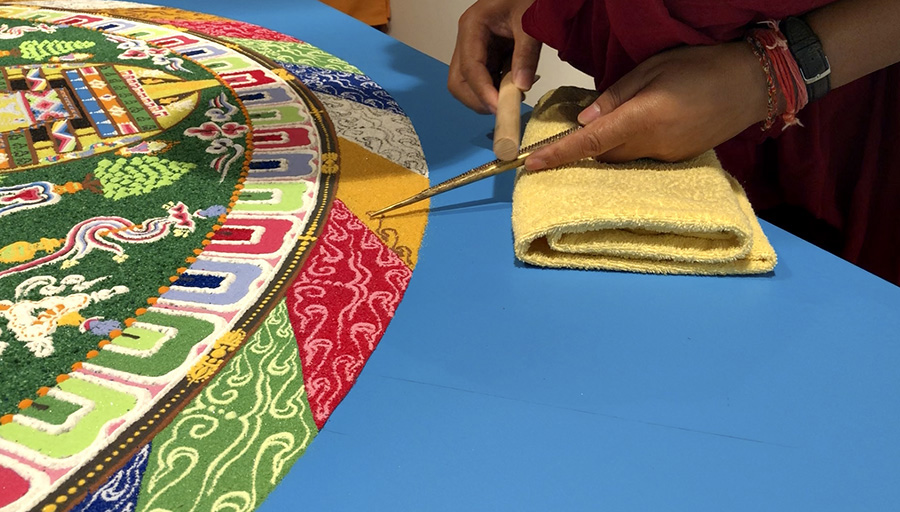
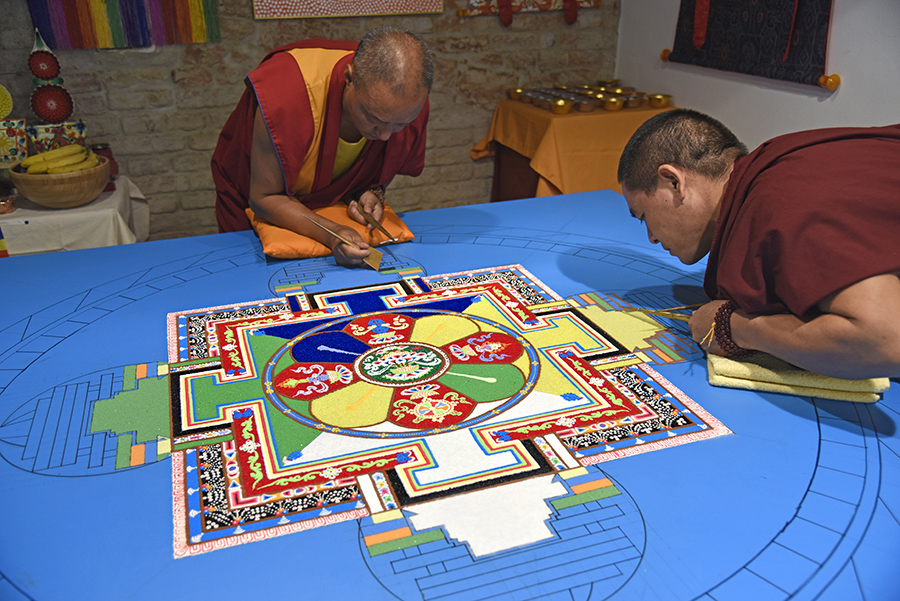
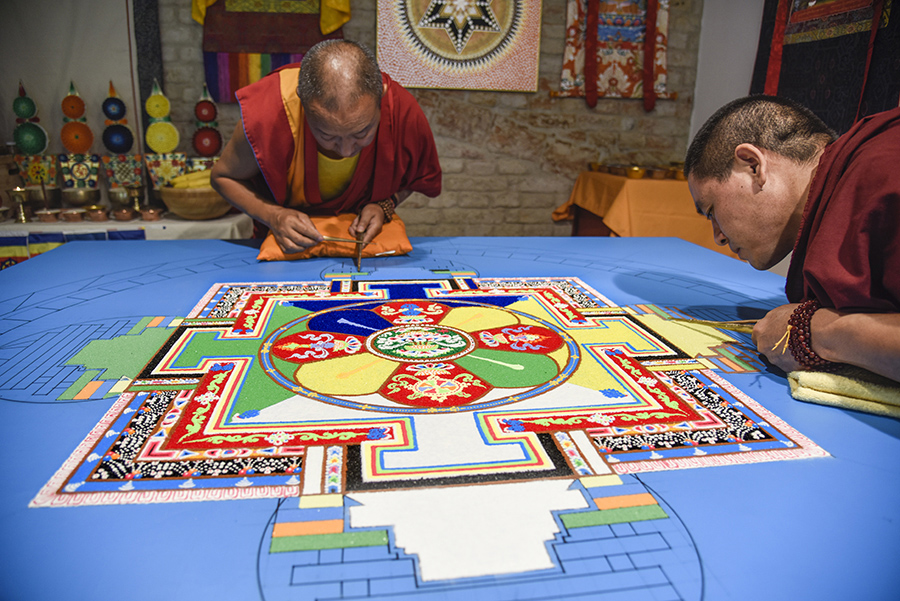
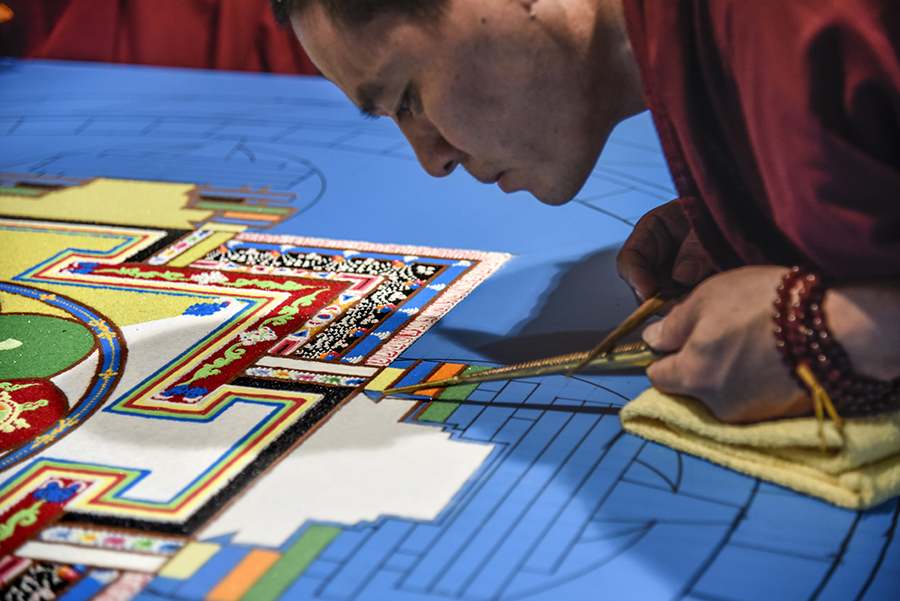
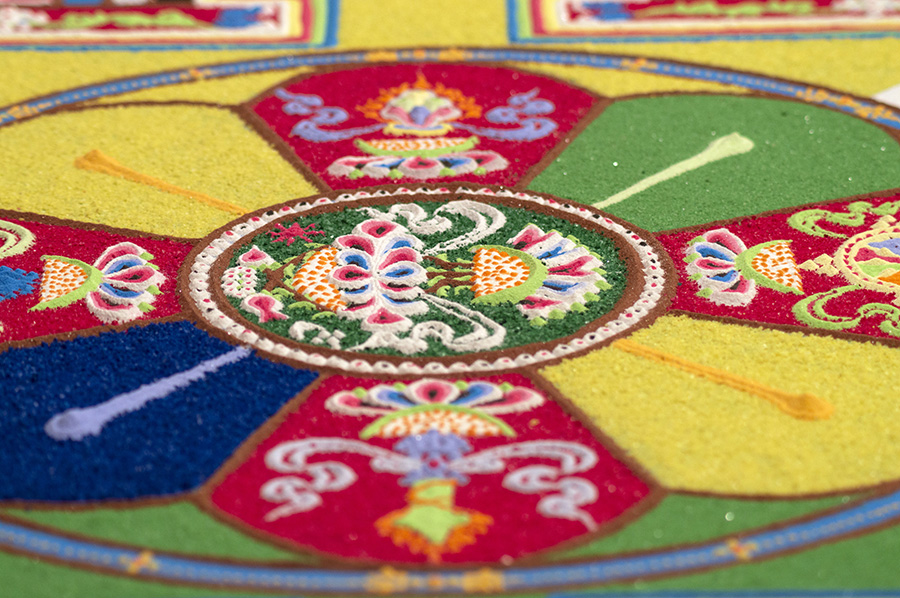
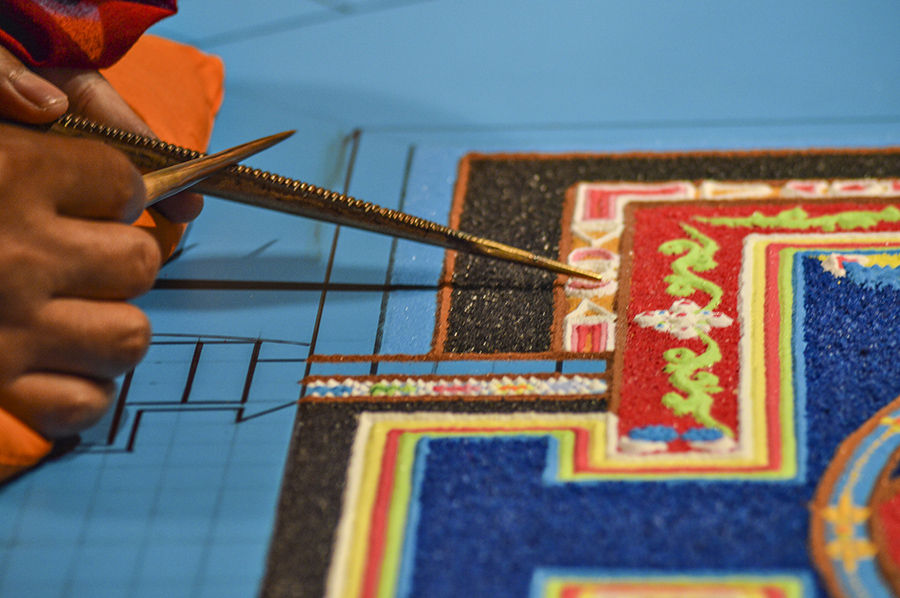
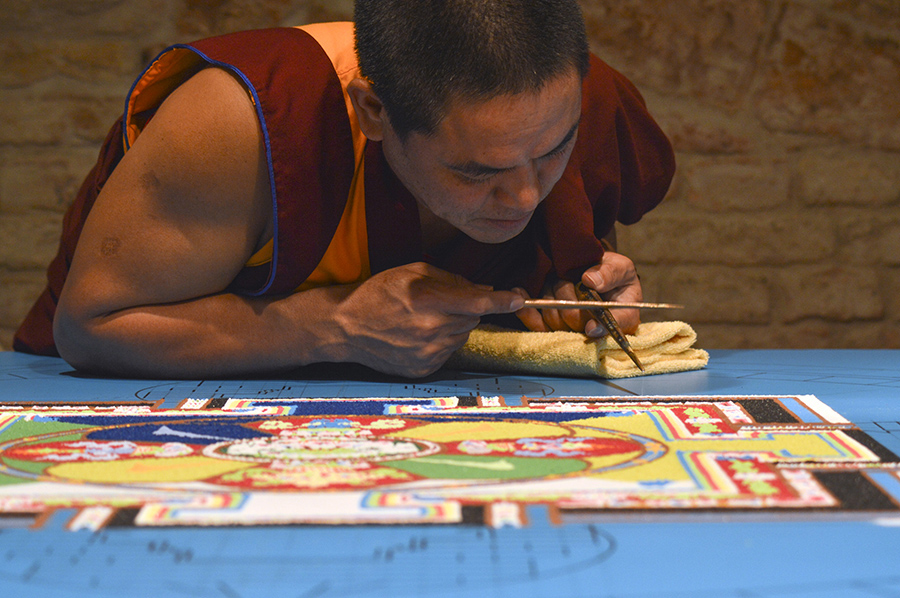

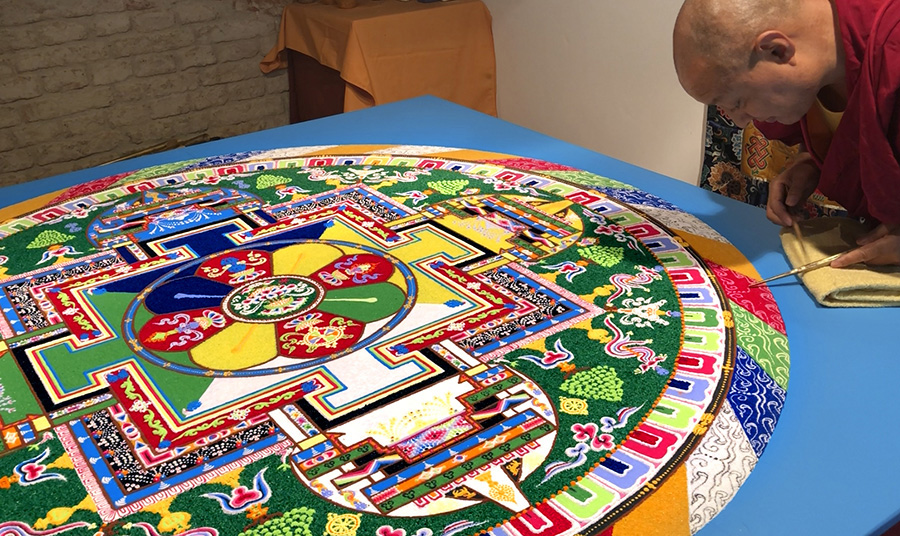
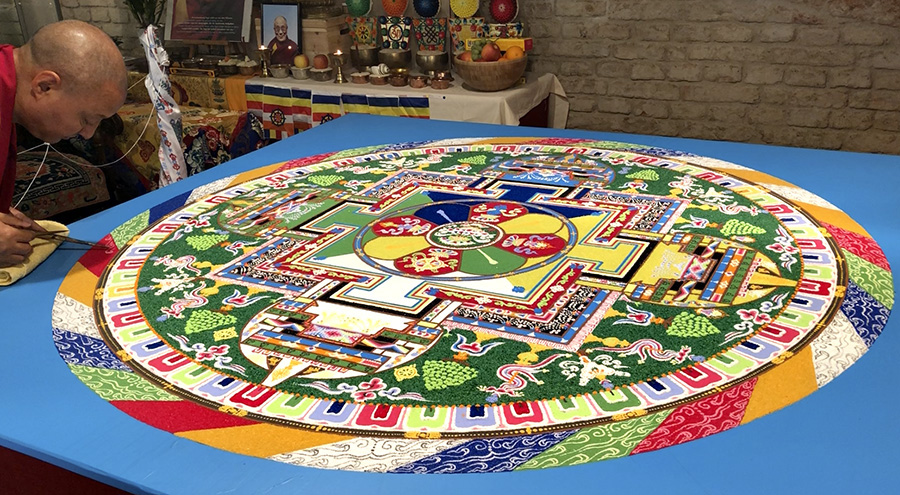
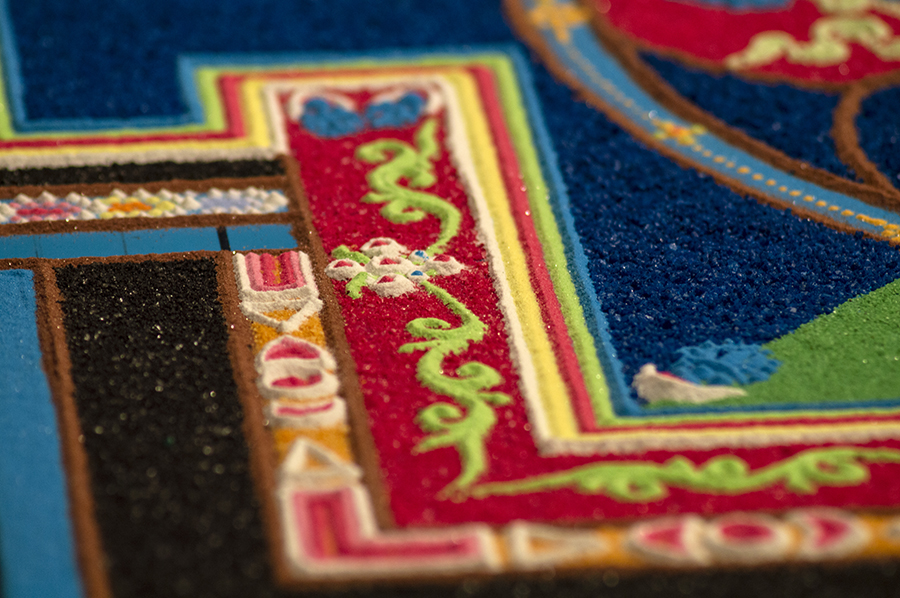
17 - 17
<
>
Green Tara Sand Mandala
11.-18. October 2017 in Vienna, Austria
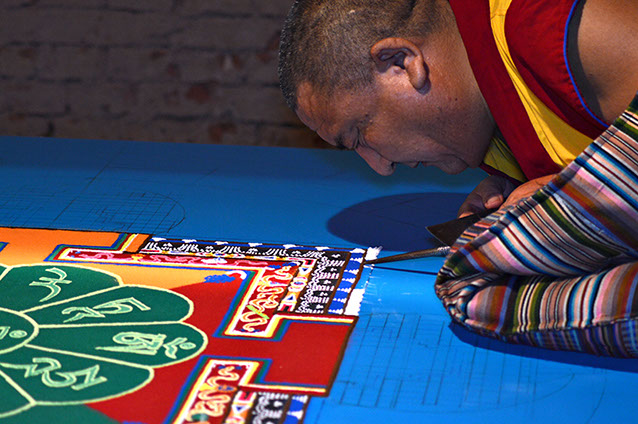
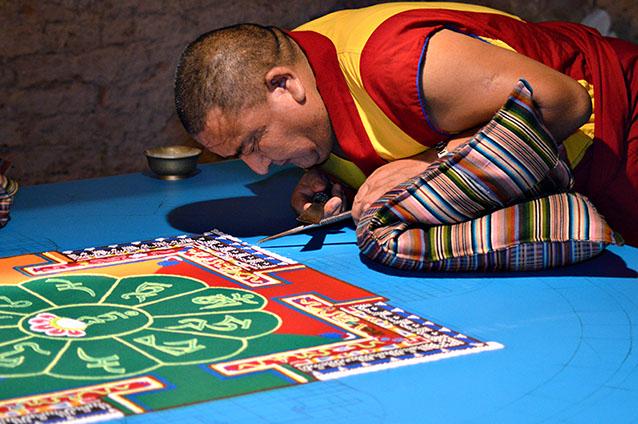
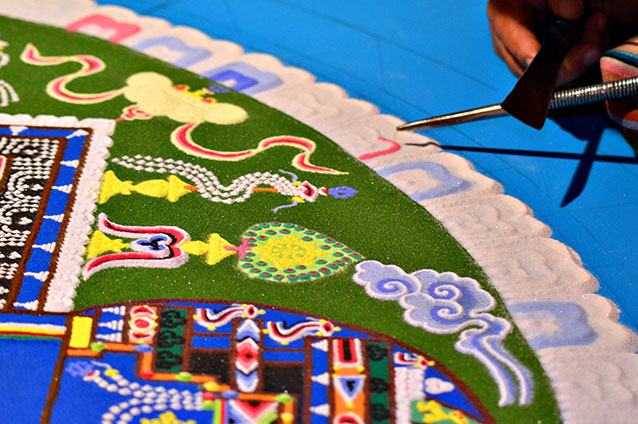
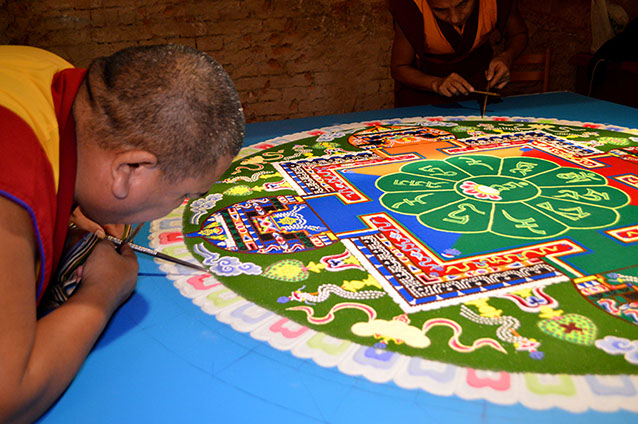
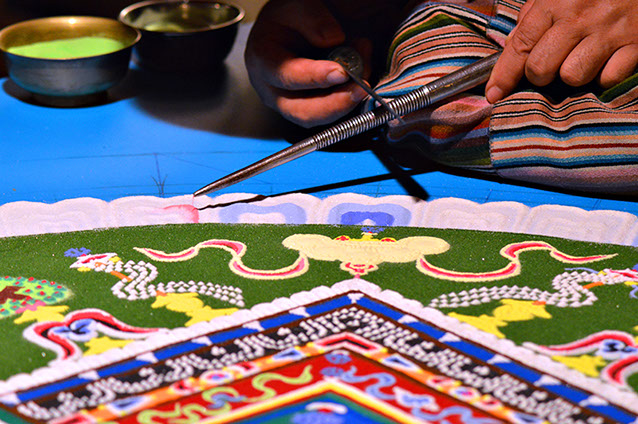
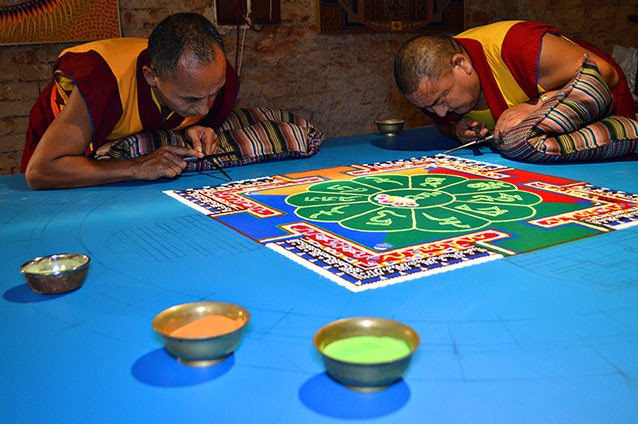
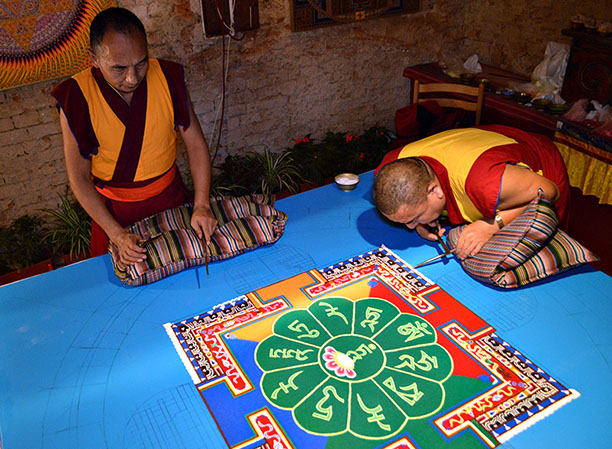
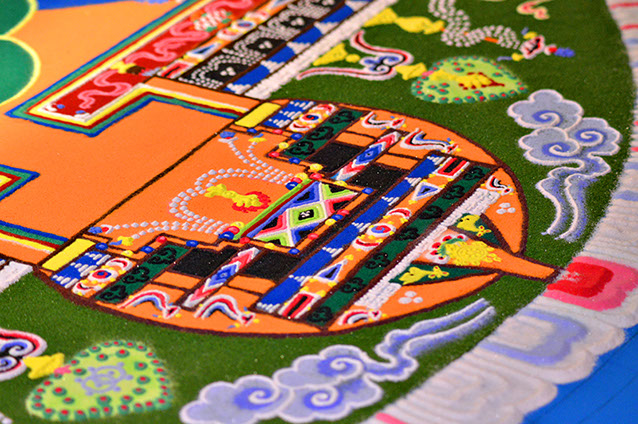
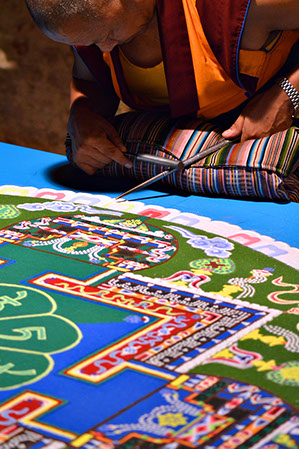
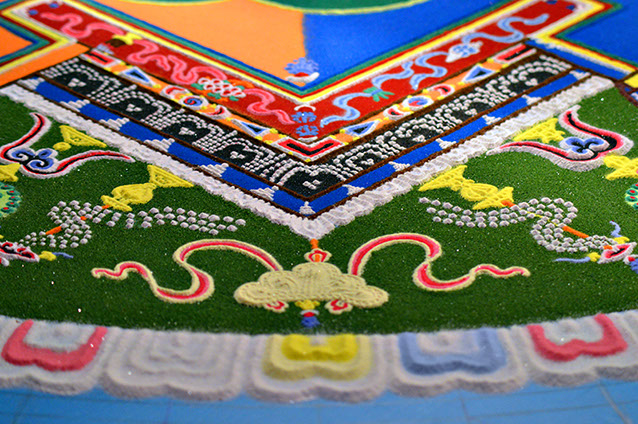
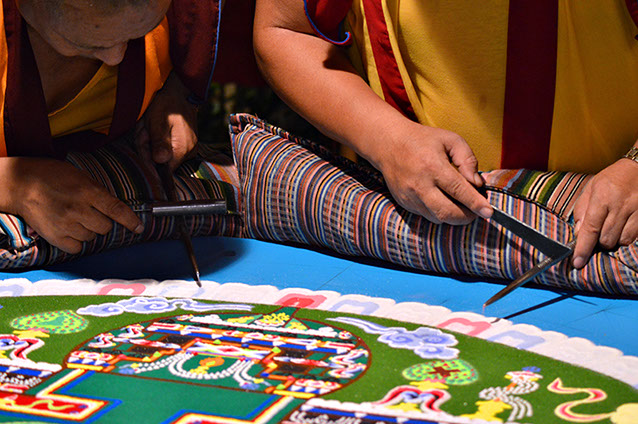
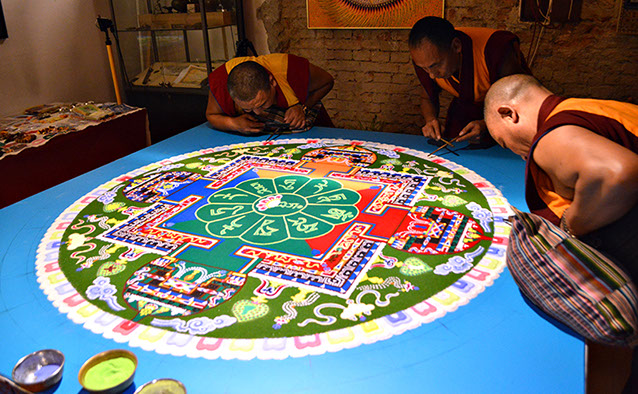
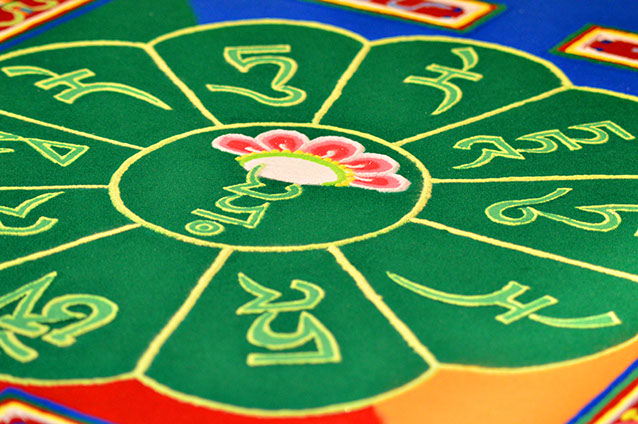
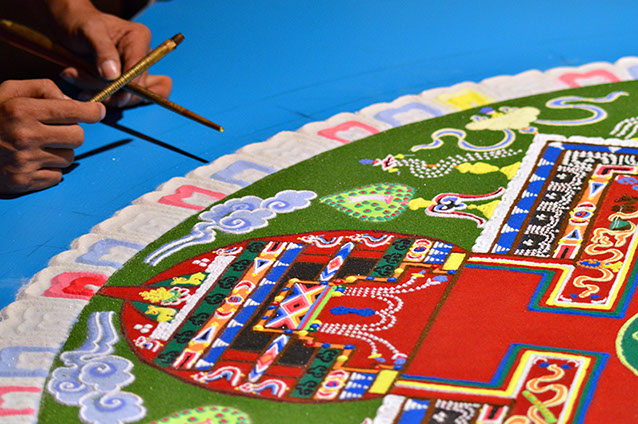
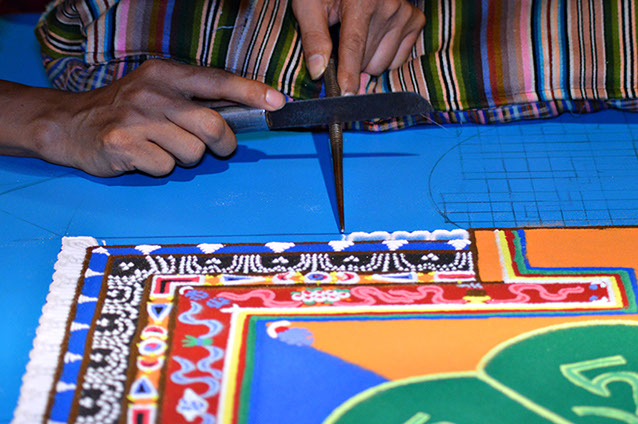
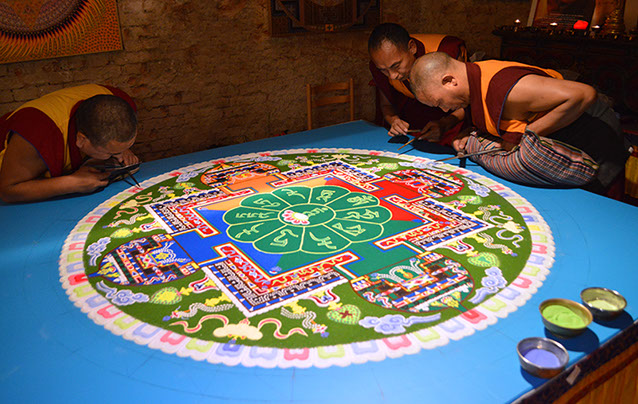
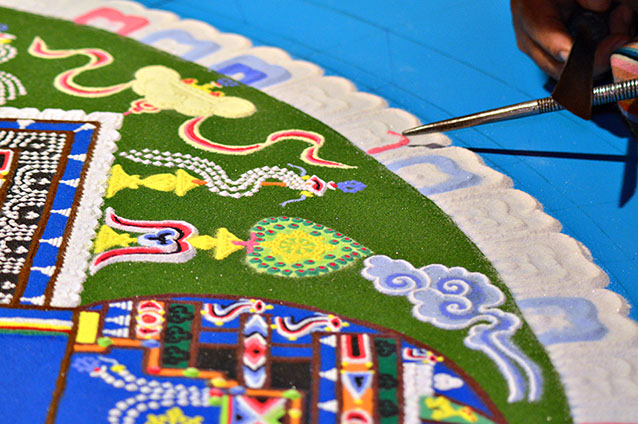
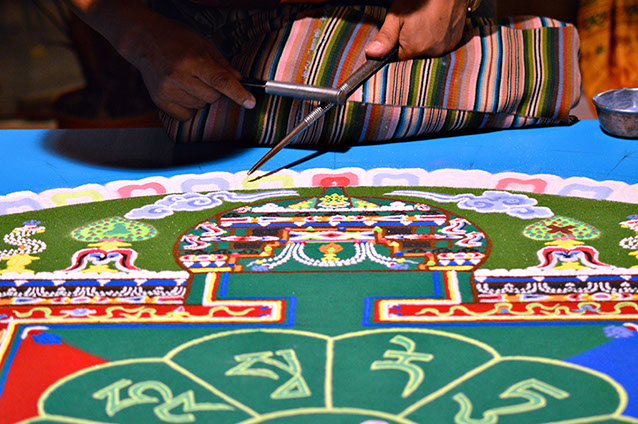
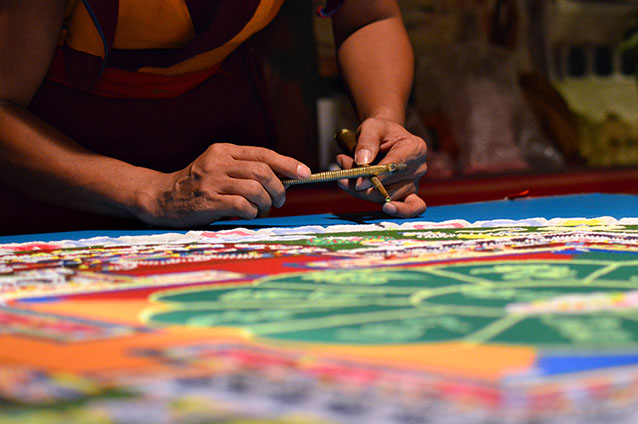
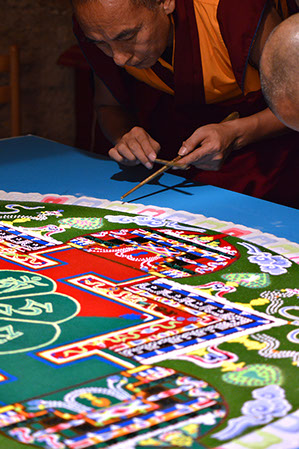
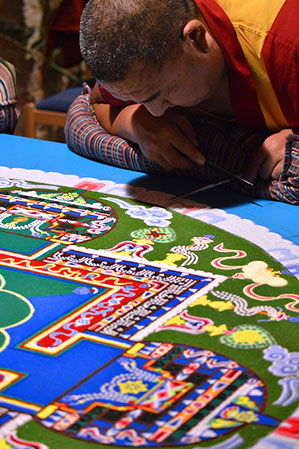

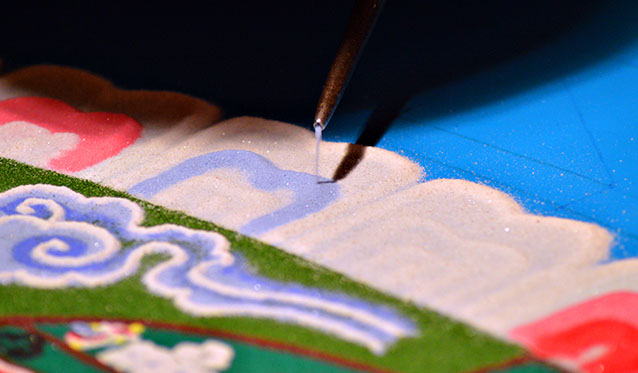
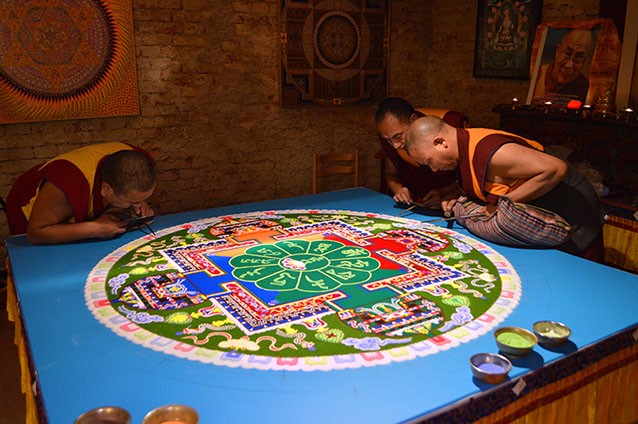
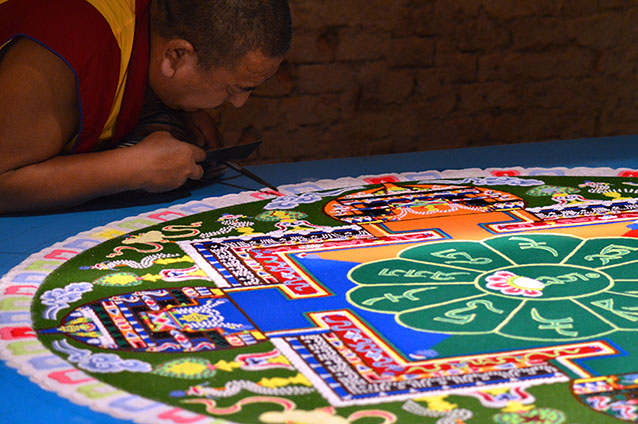
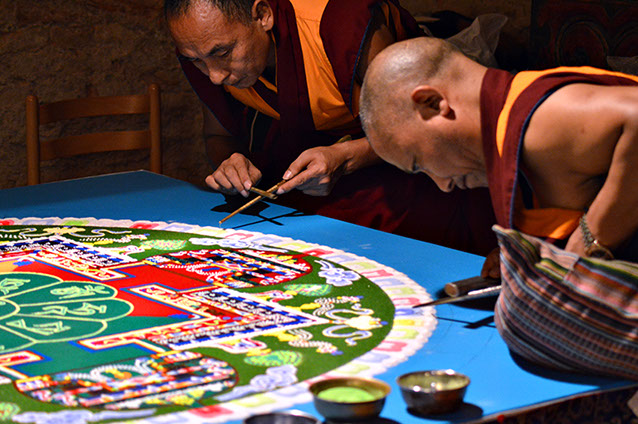
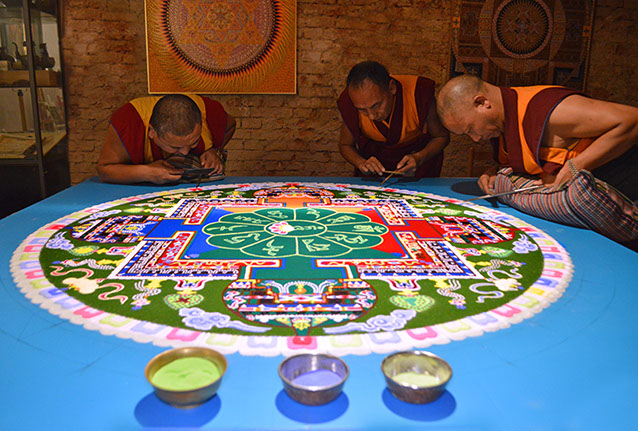
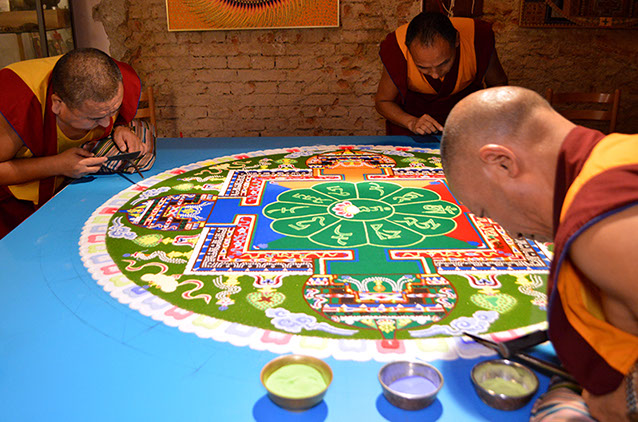
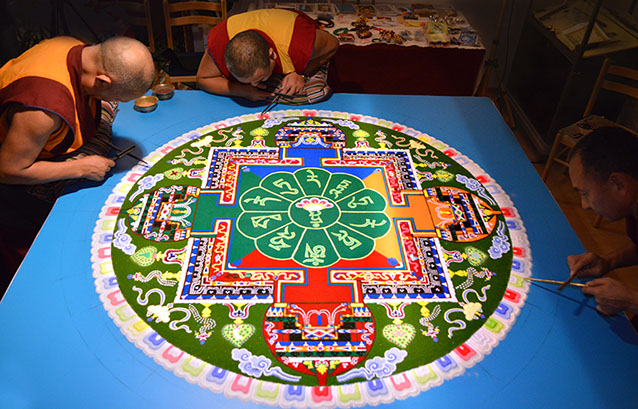
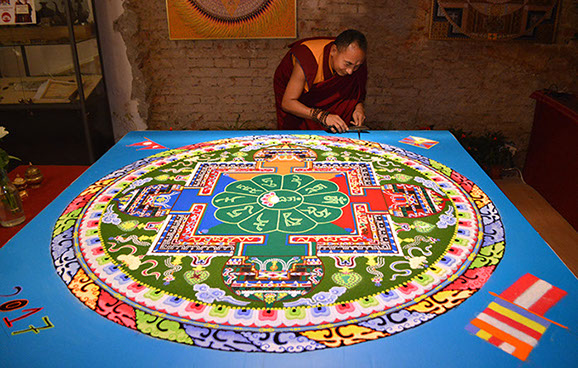
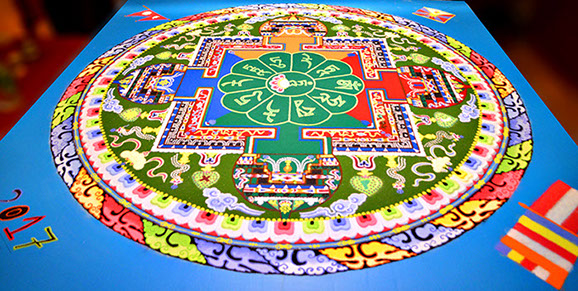
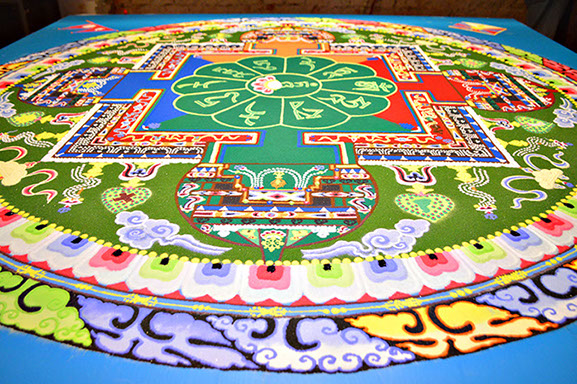
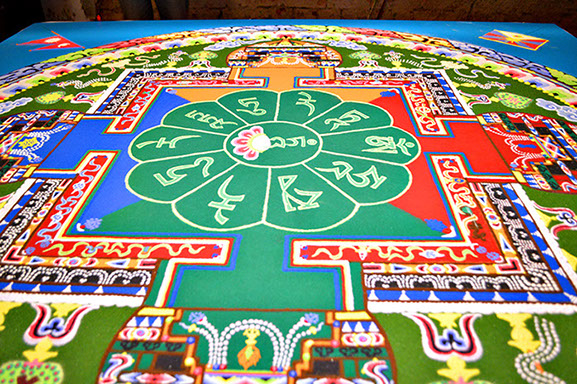
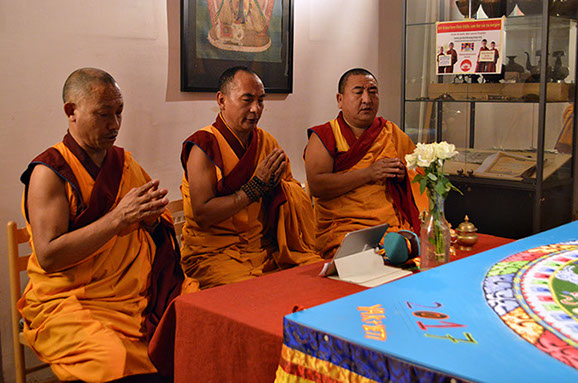
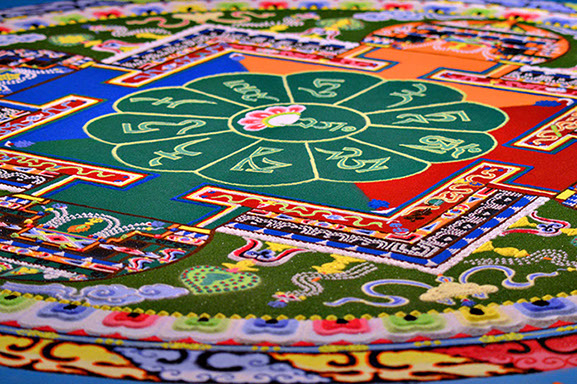
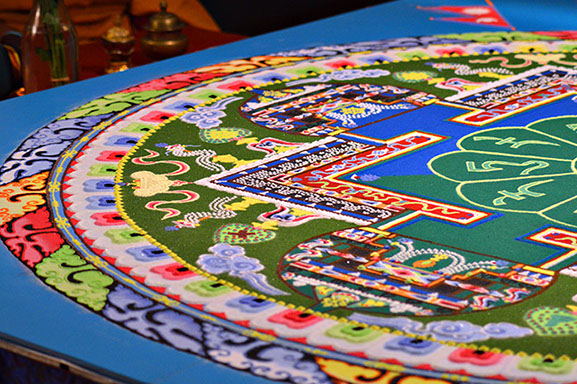
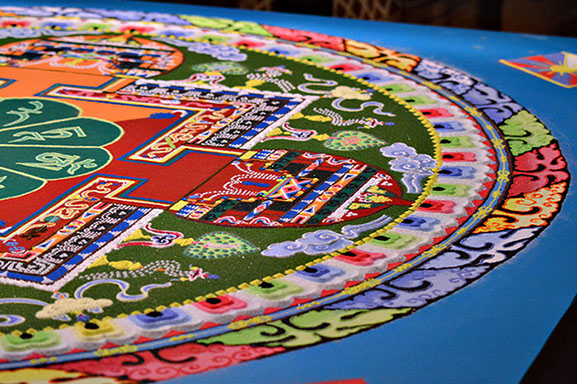
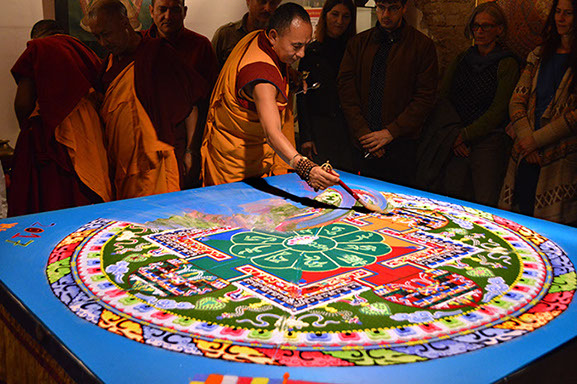
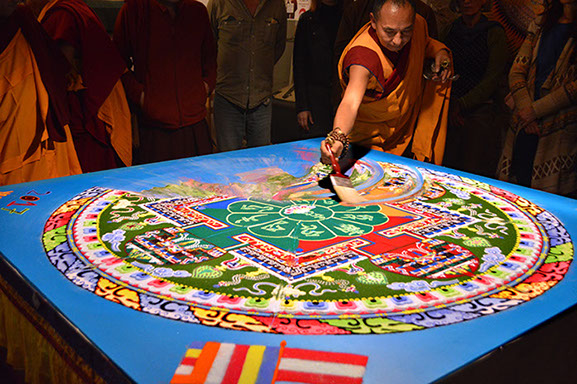
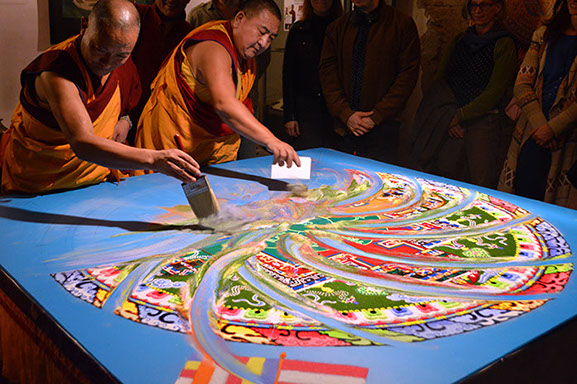
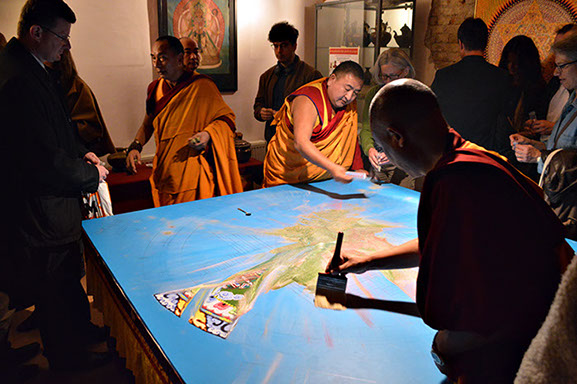
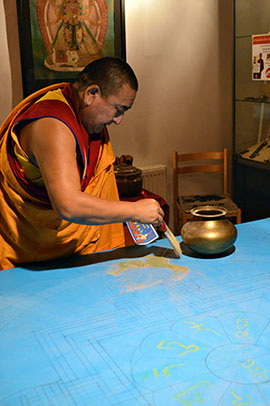
10 - 42
<
>
English
Deutsch
The following mandala was created by Geshe Lobsang Soepa and his fellow monks Geshe Nima Tsering and Geshe Gyaltsen. The Green Tara mandala is for happiness, peace and prosperity. Ārya Tārā, is a female Buddha in Vajrayana Buddhism. She is known as the "mother of liberation", and represents the virtues of success in work and achievements. The Green Tara is associated with the qualities of action and protection, kindness and caring, and a strong connection to the earth. The practice of Green Tara is powerful to help us overcome our fears, reduce stress, achieve a better future, heal physical and mental illness, as well as to improve our relationships with ourselves and others.
Die Grüne Tara steht für Erfolg und Leistung, Handeln und Schutz, Güte, Fürsorge und ist stark verbunden mit der Erde. Sie hilft uns bei der Überwindung von Angst, unterstützt ein besseres zukünftiges Leben, weniger Stress, Heilung von physischen und geistigen Erkrankungen und stärkt die Verbindung zu uns selbst und den anderen.
Medicine Buddha Sand Mandala
November 2016 in Sofia, Bulgaria
This event was initiated by me, and organized by my close friend Eli Loginova, her Tibetan Center in Sofia, the circle DULO and my mother Marina.
Lama Ngawang Kunga Bista
Lama Ngawang Kunga Bista is from the Kingdom of Mustang. He is a not only a spiritual leader, he is much more a visionary fighter for a better future for his holly land. I am honored to call him a dear friend.
He became a monk when he was only 3 years old. 10 years of his life as a monk were very far away from his family, in a monastery in India. 10 long and sad years without any contact with them. In that time he had a plan one day to open a school for poor children, so they can have education without becoming monks and leaving Mustang. At age 30 after many trials he finally reached his goal.
Lama Ngawang is a senior Buddhist monk and since the spring of 2017 a chairman of Upper Mustang.
Here you can read more about him and support his schools.
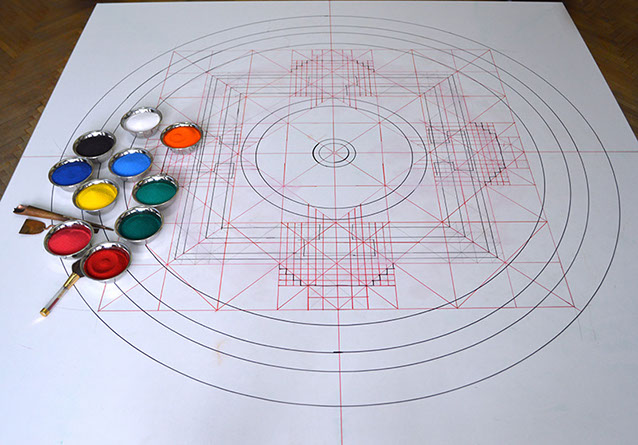
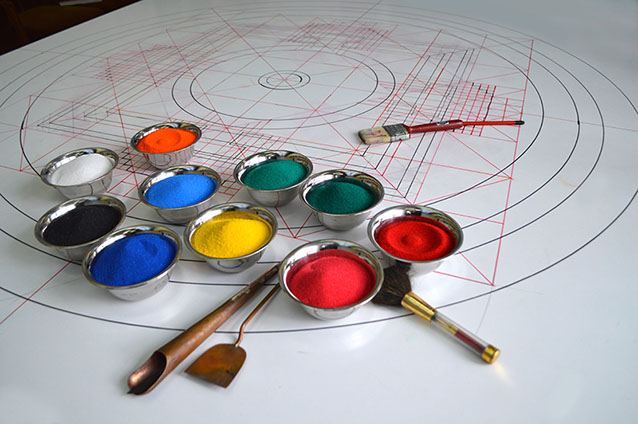
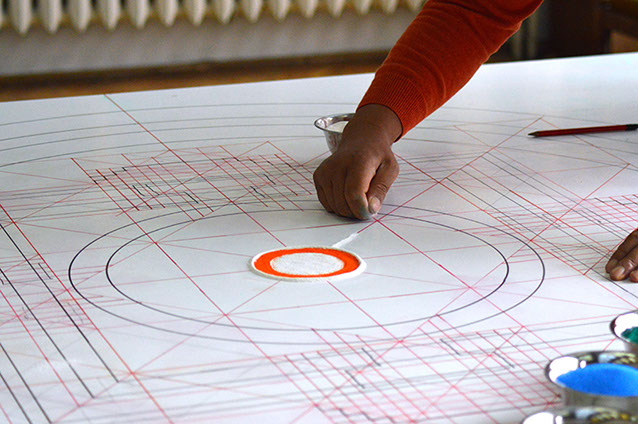
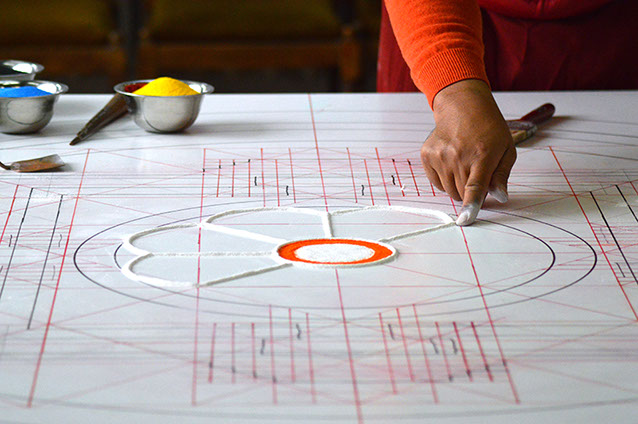
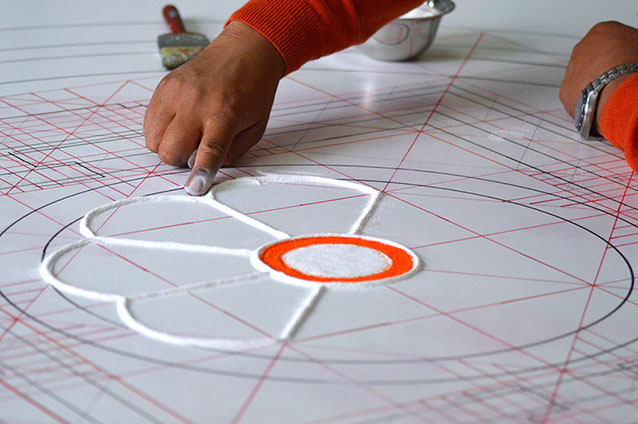
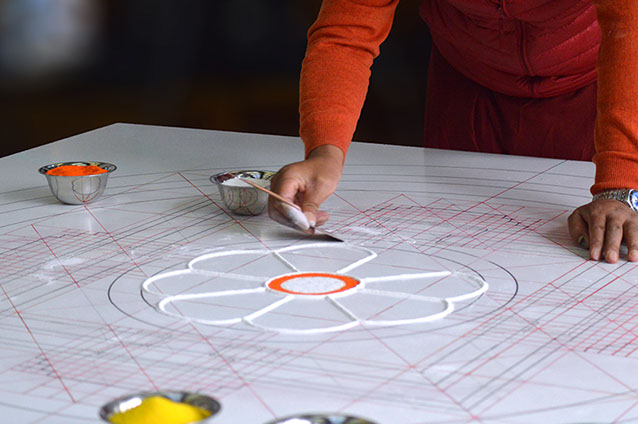
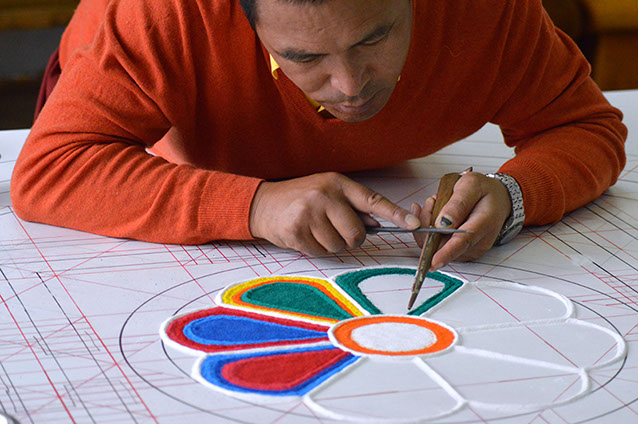
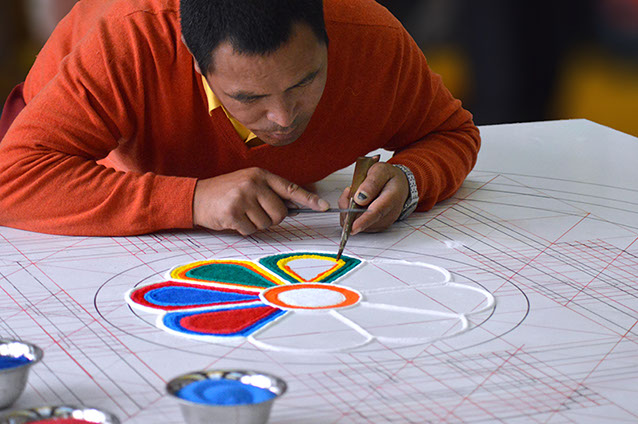
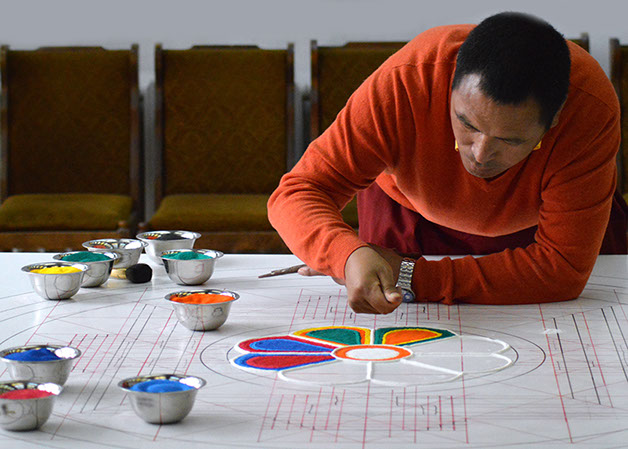
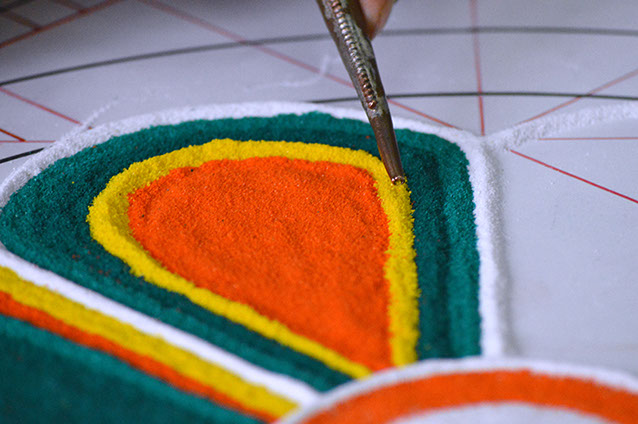
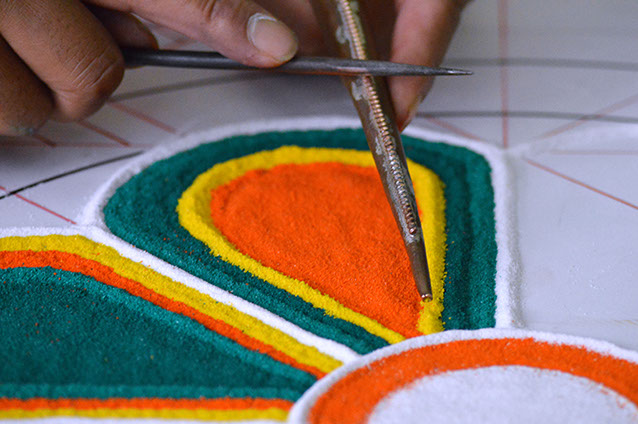
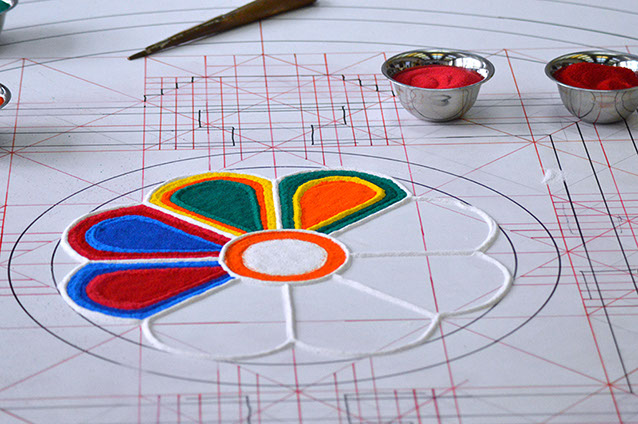
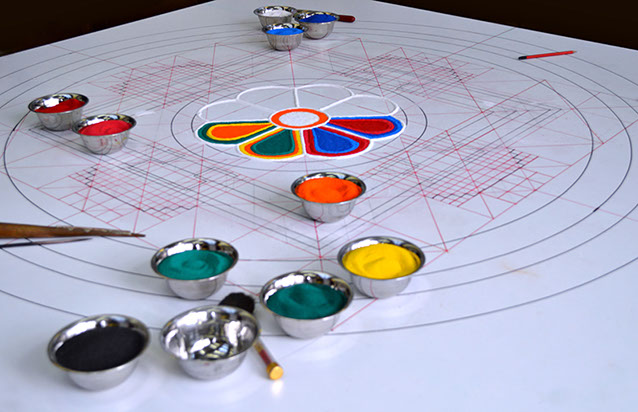
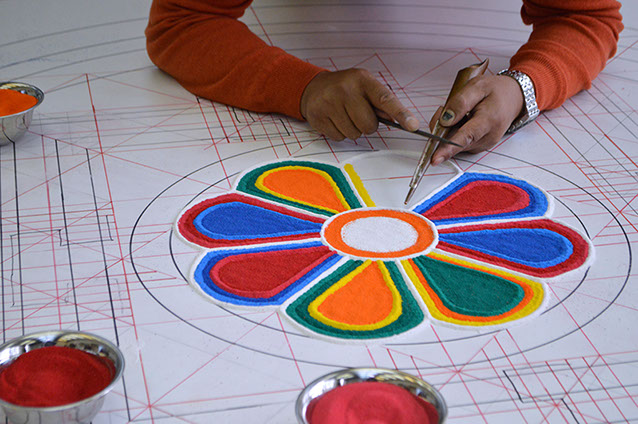
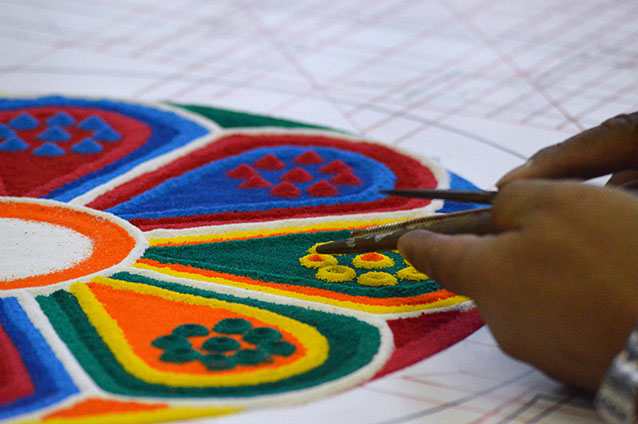
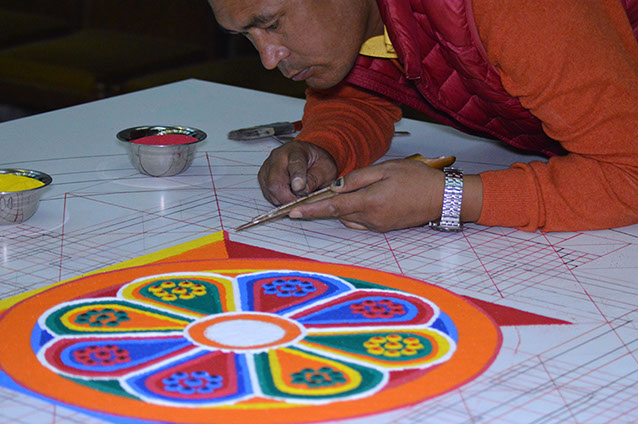
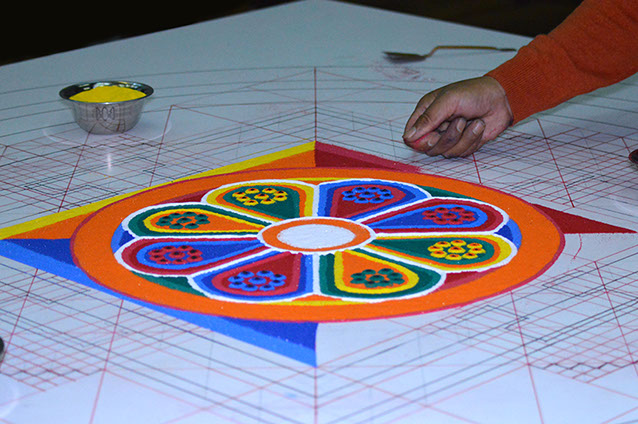
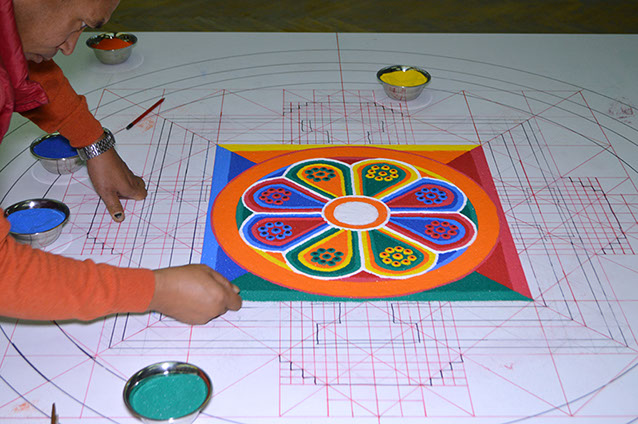
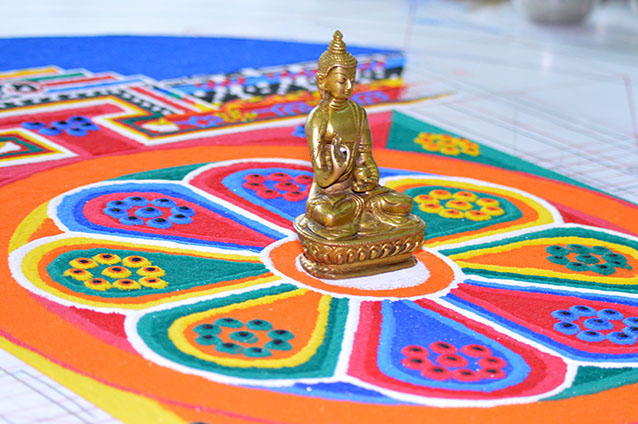
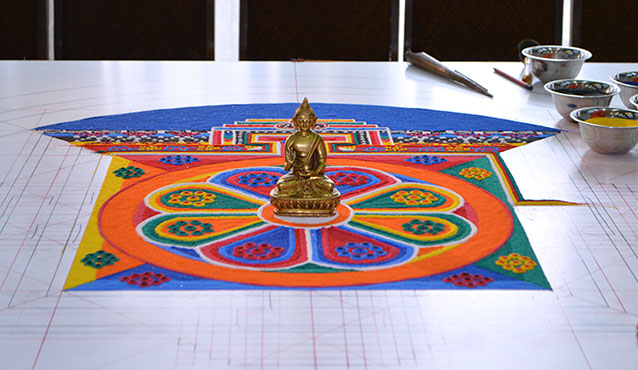
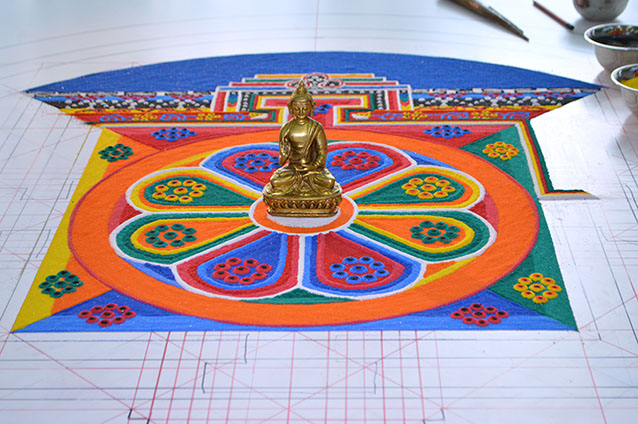
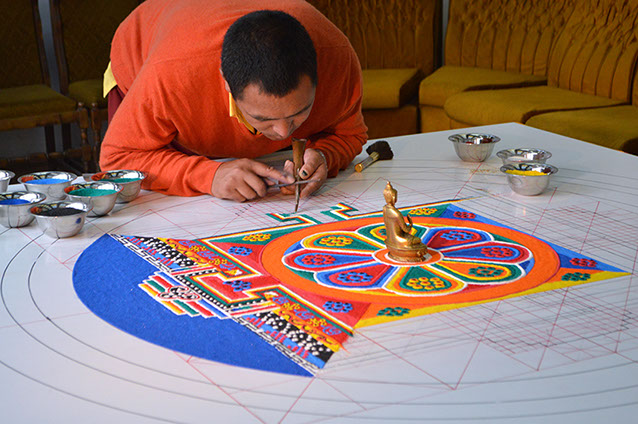
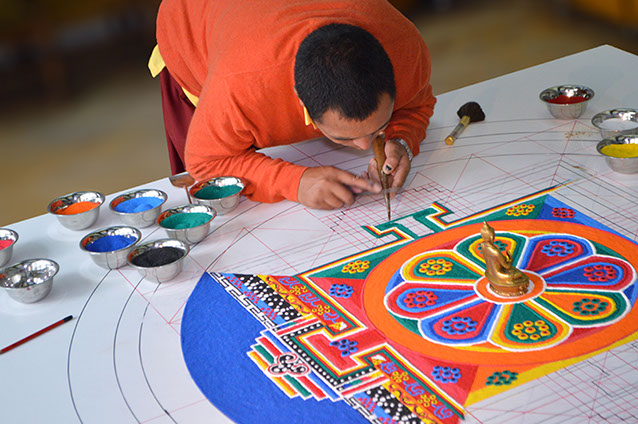
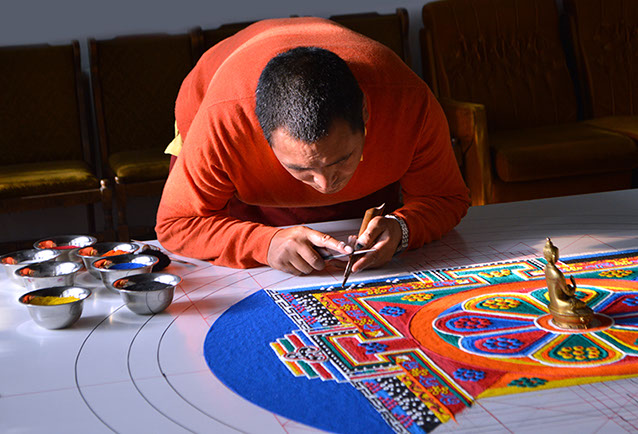
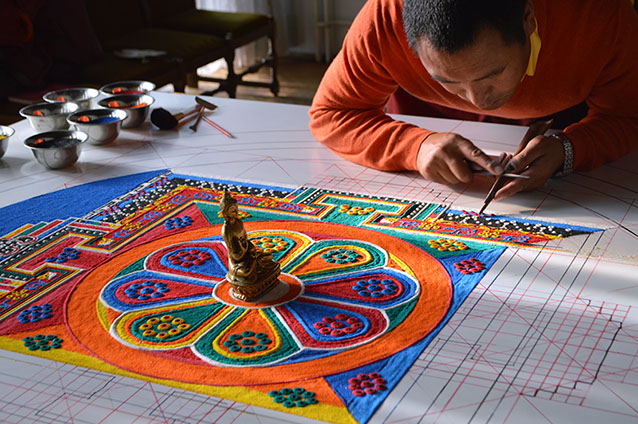
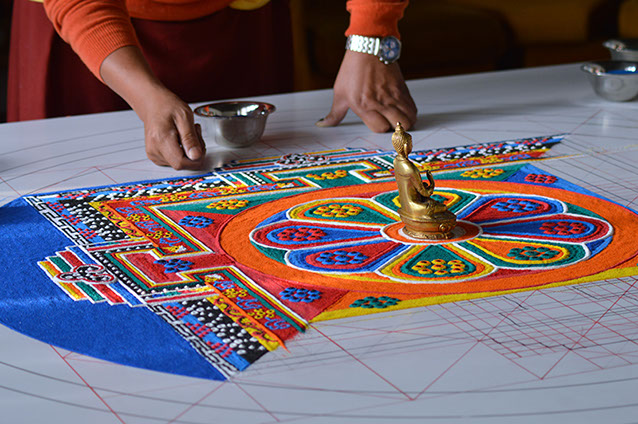

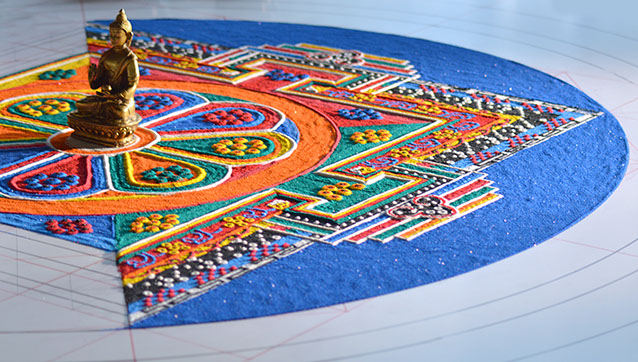
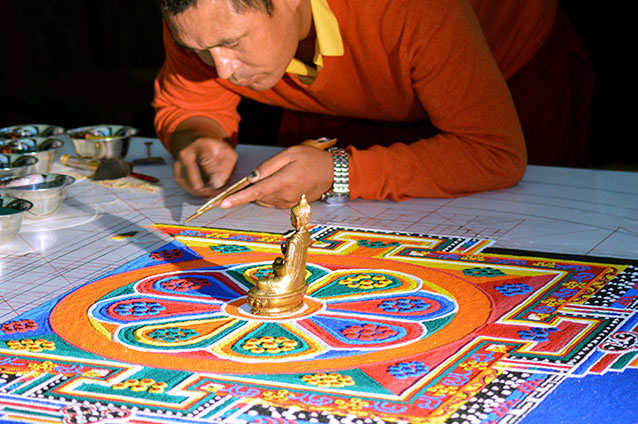
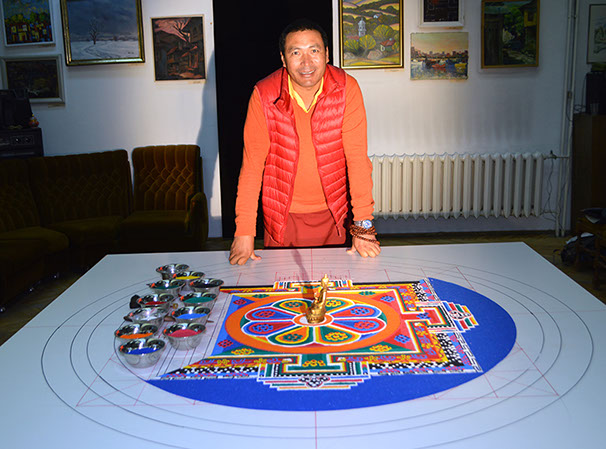
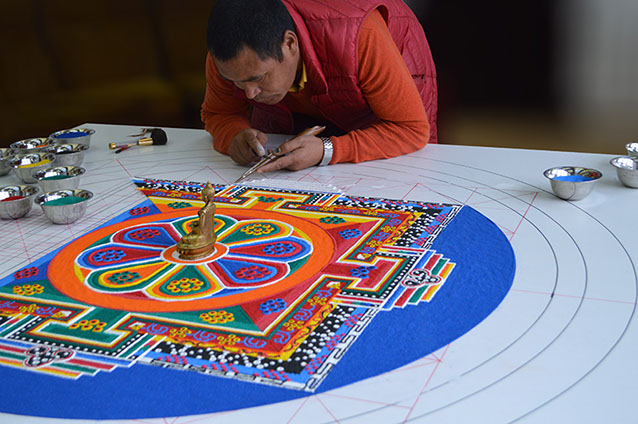
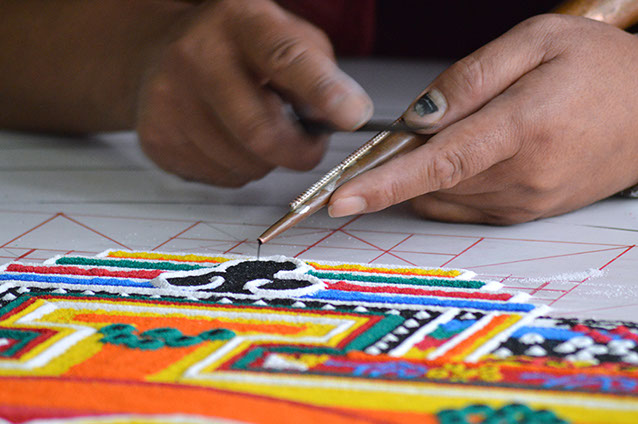
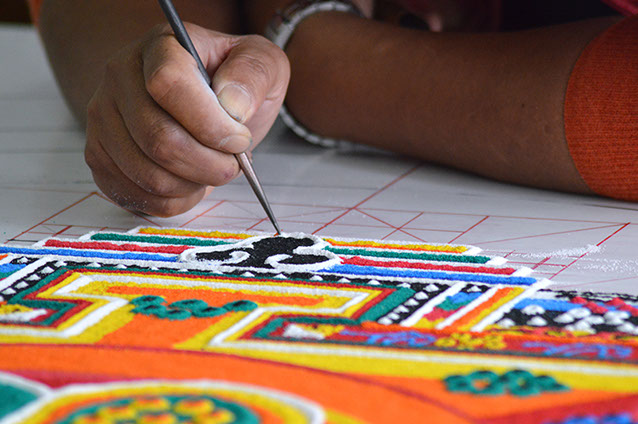
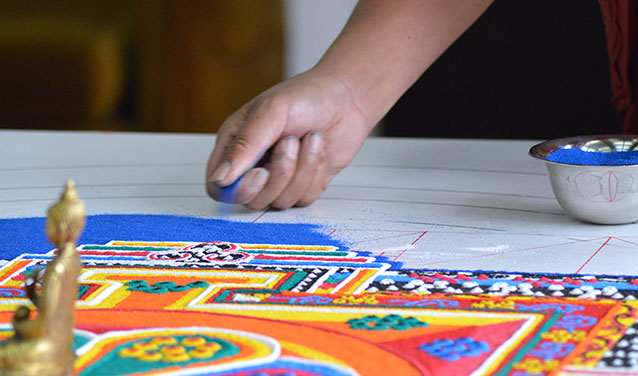
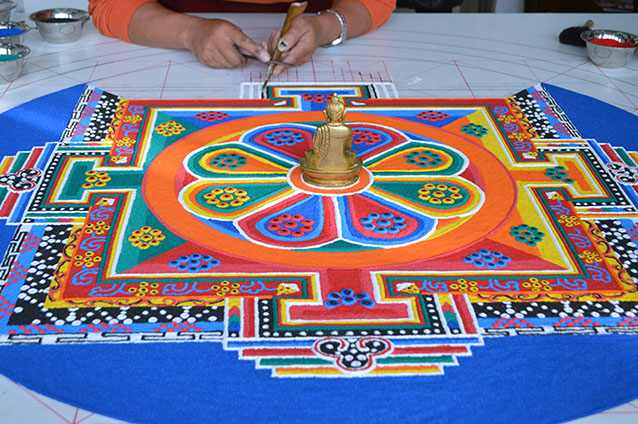
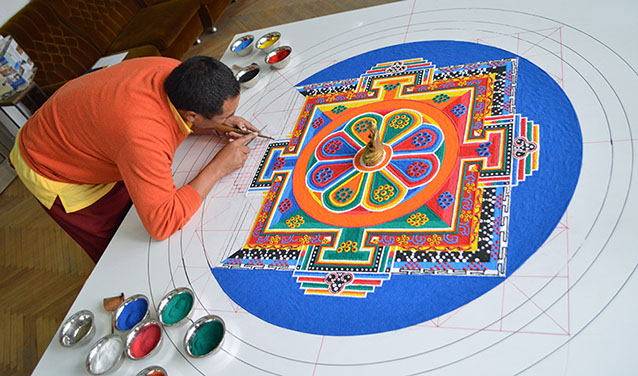
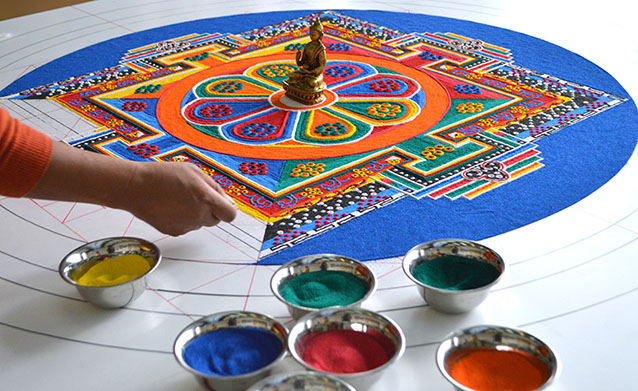
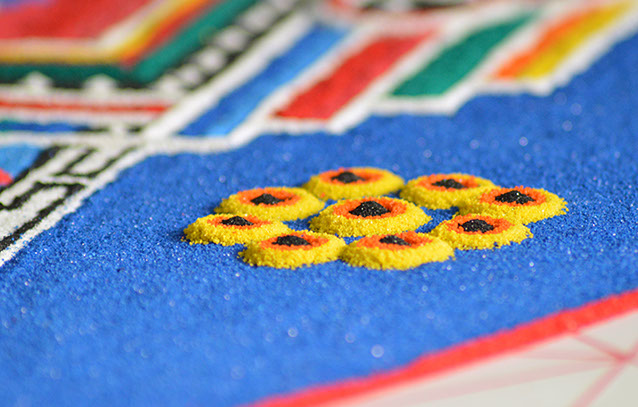
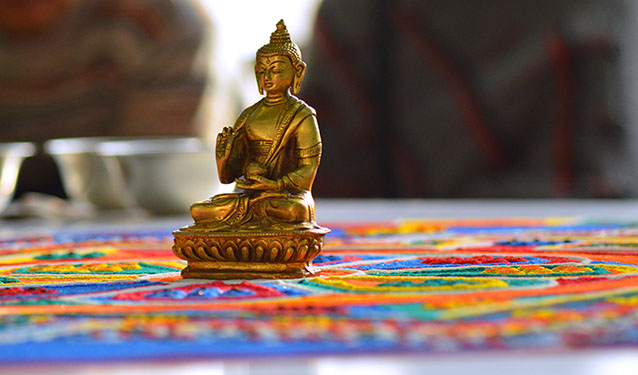
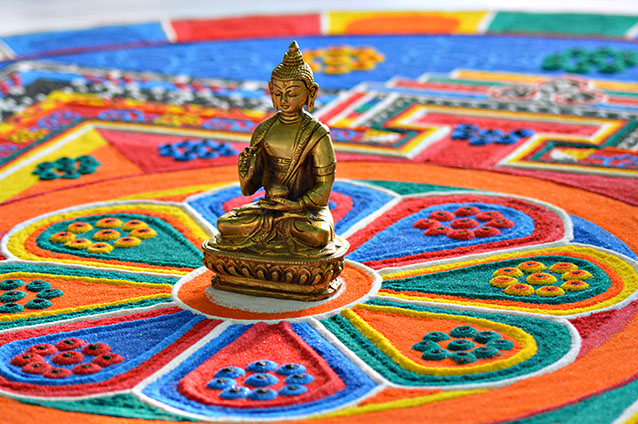
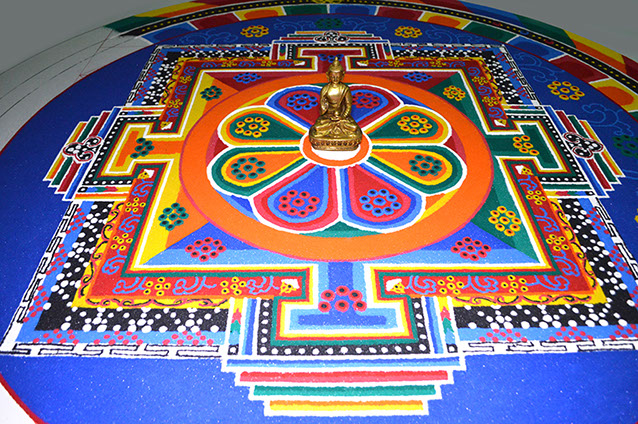
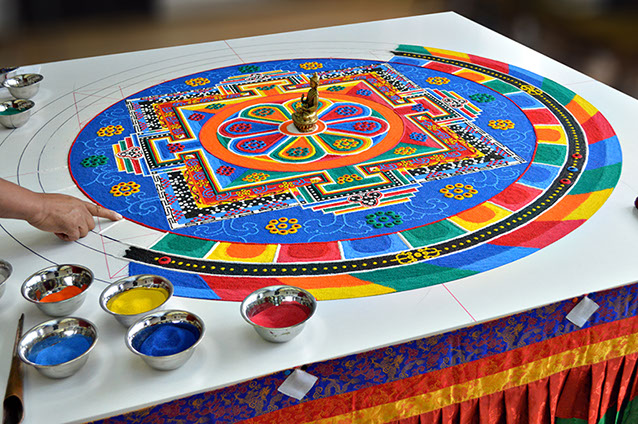
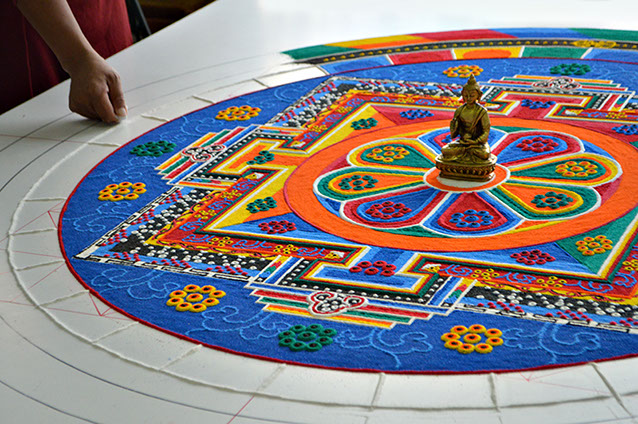
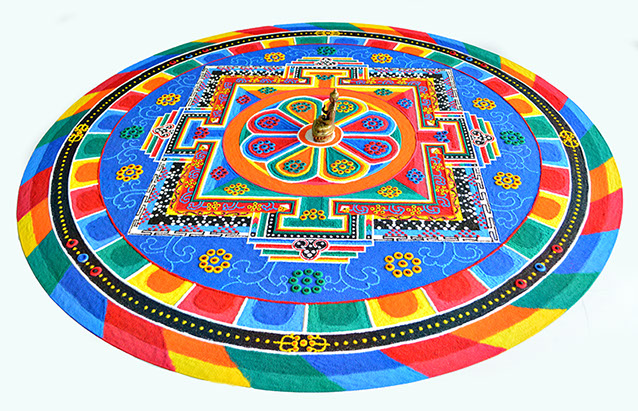
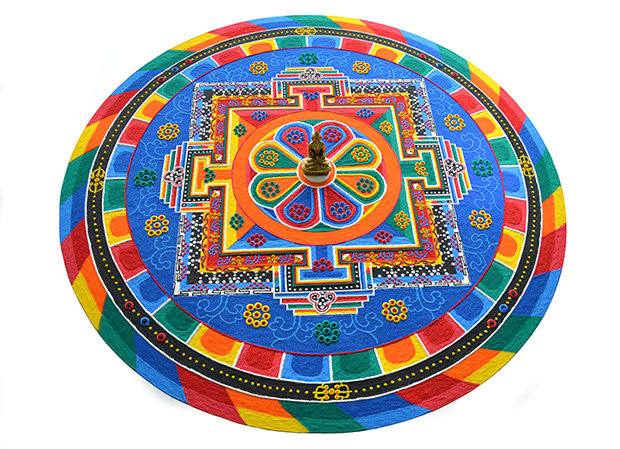
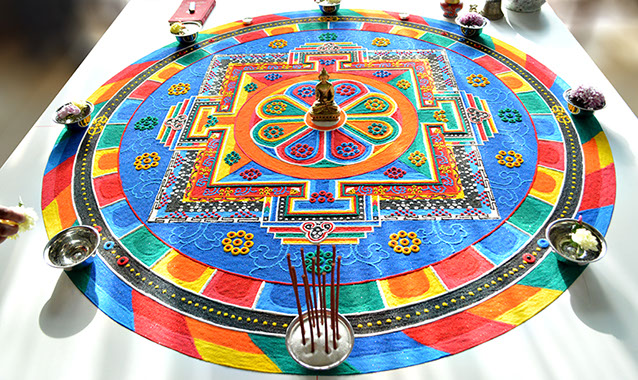
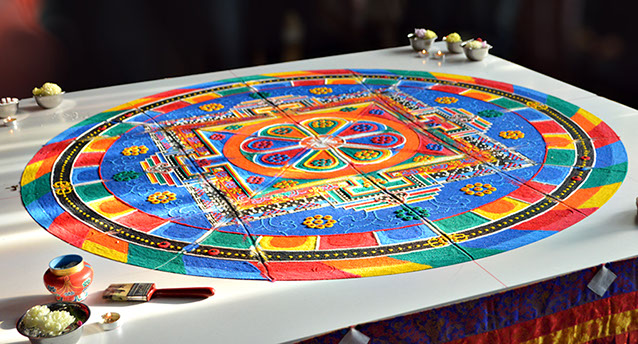
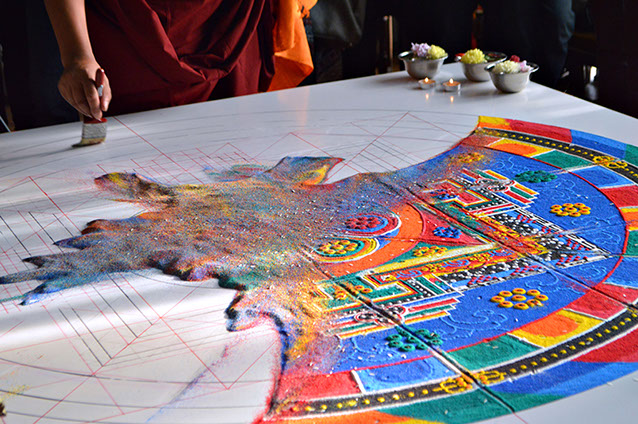
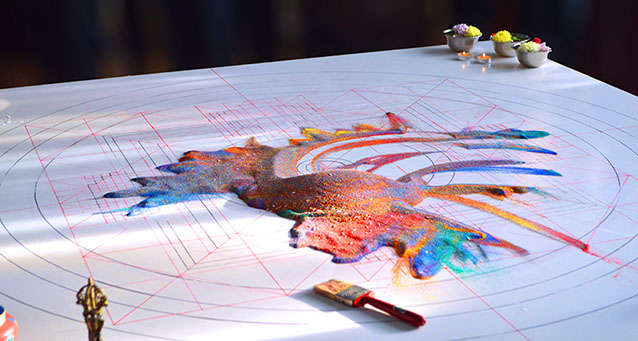
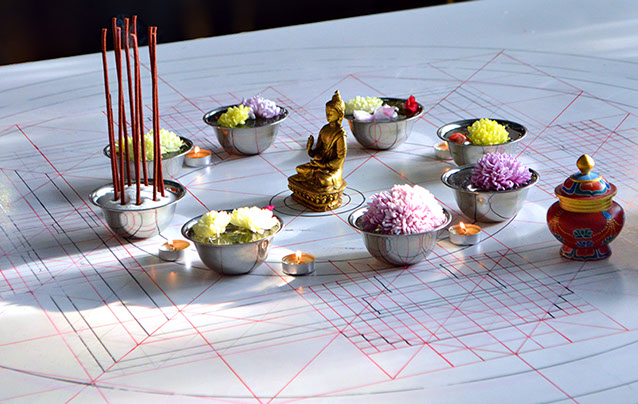
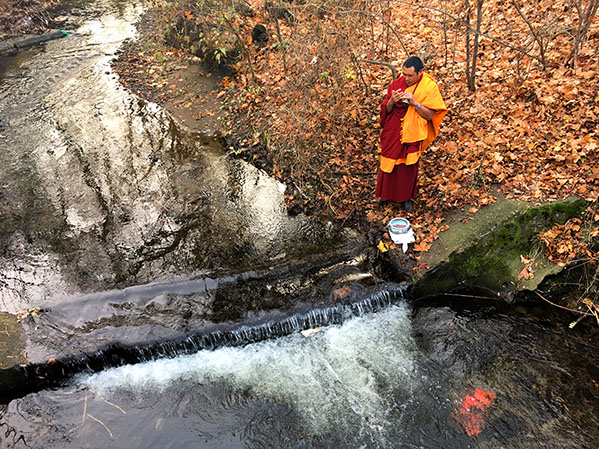
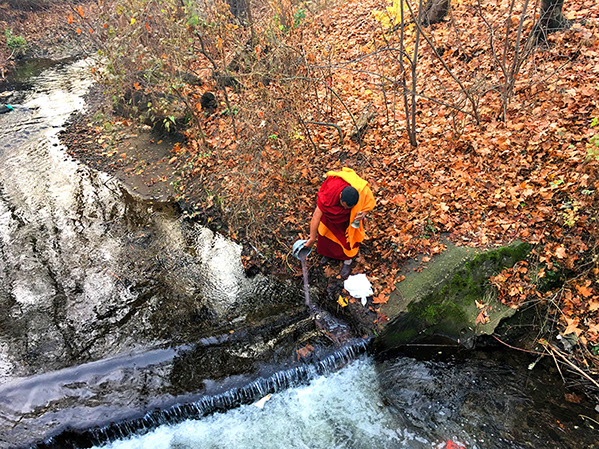
1 - 52
<
>
Avalokiteshvara Sand Mandala
September 2016 in Vienna, Austria
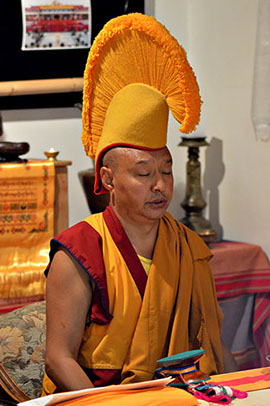
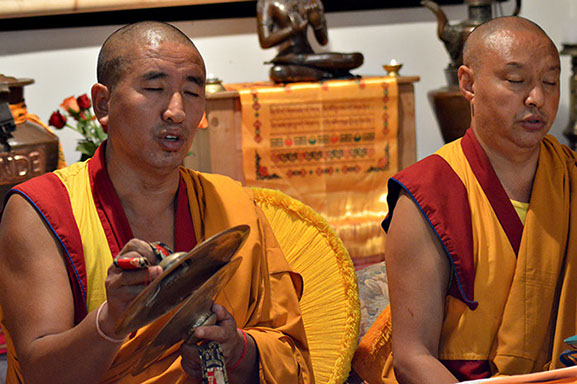
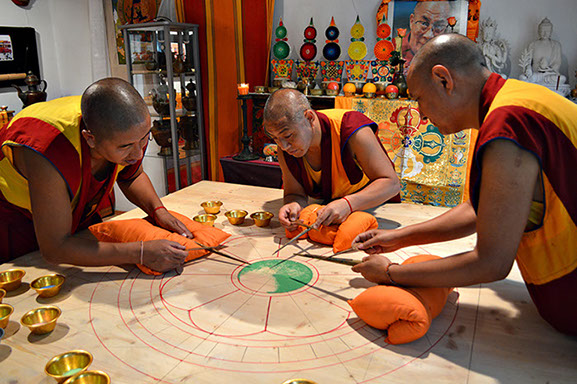
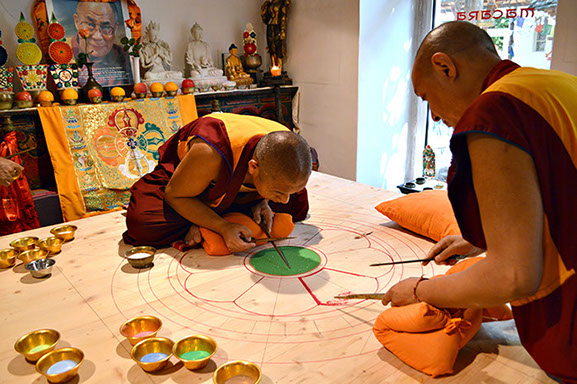
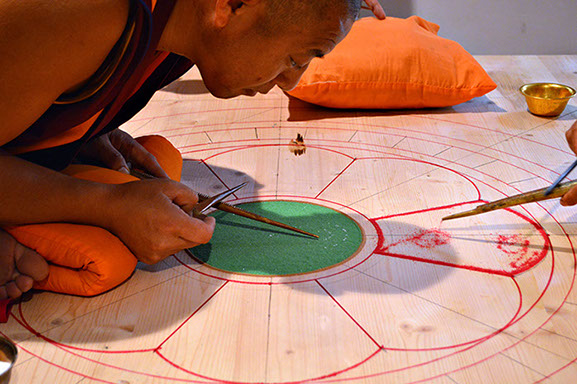
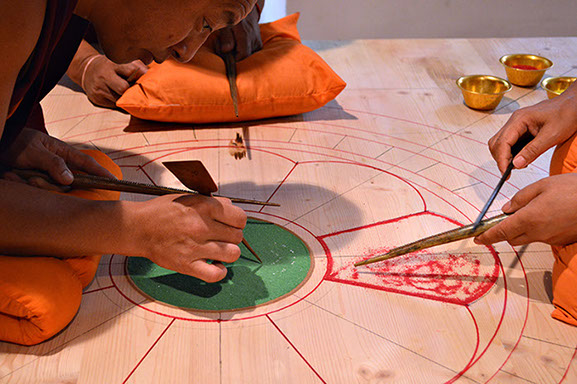
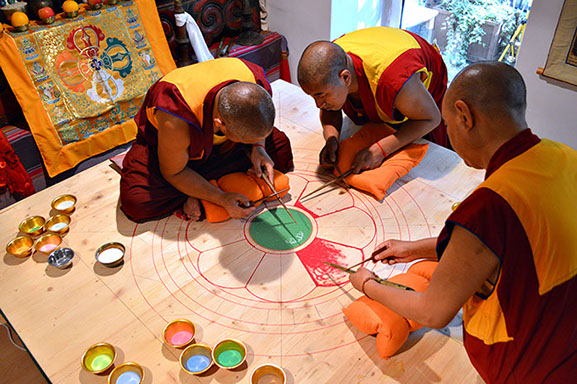
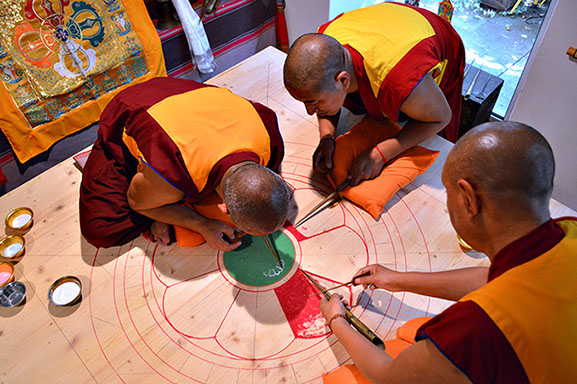
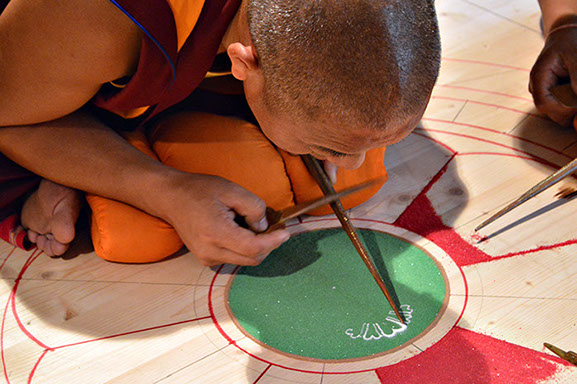
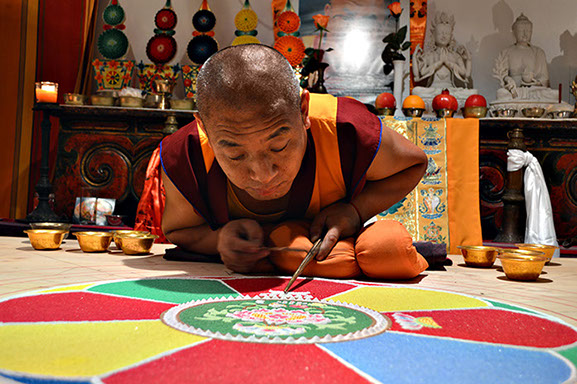
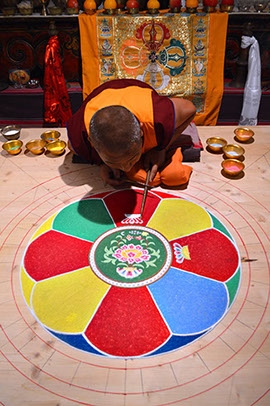
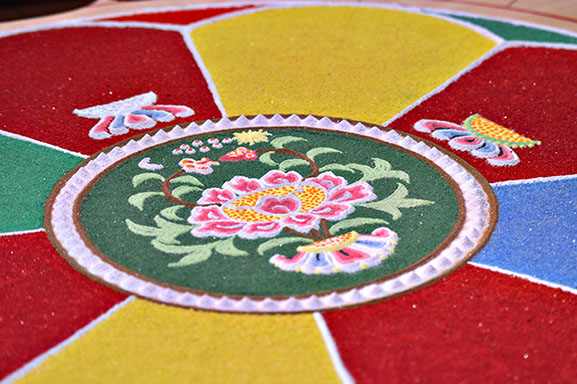
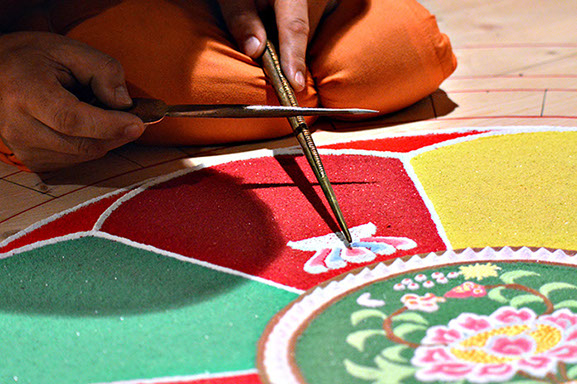
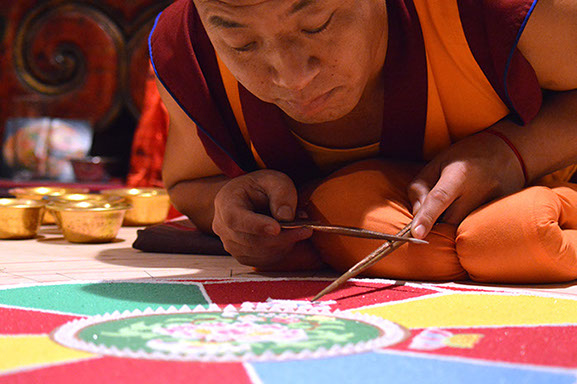
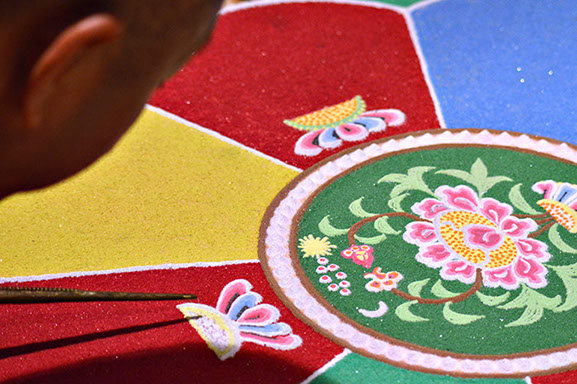

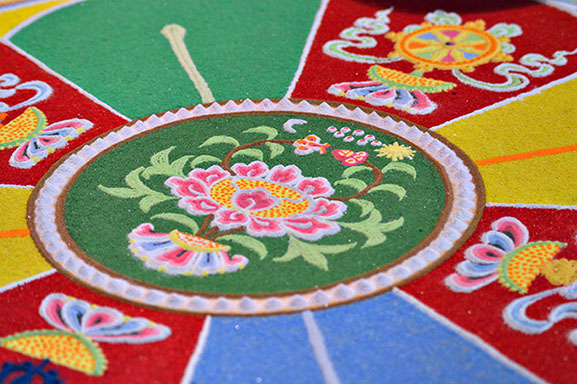
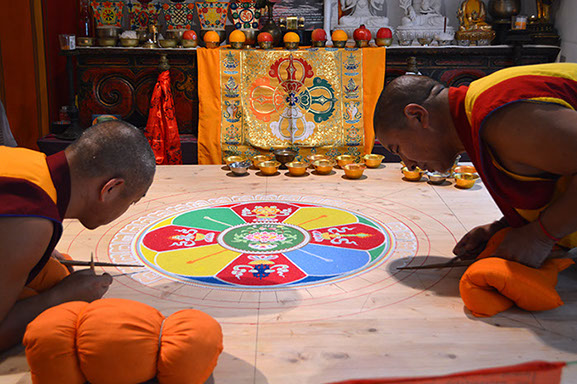
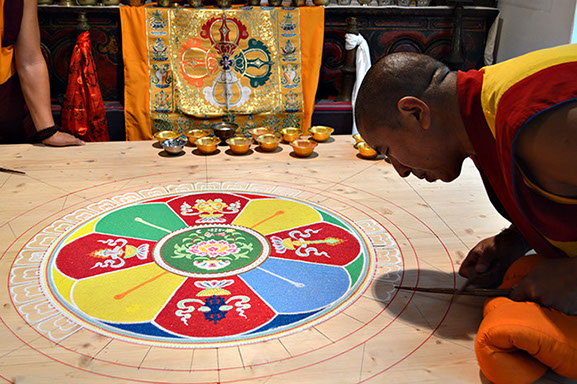
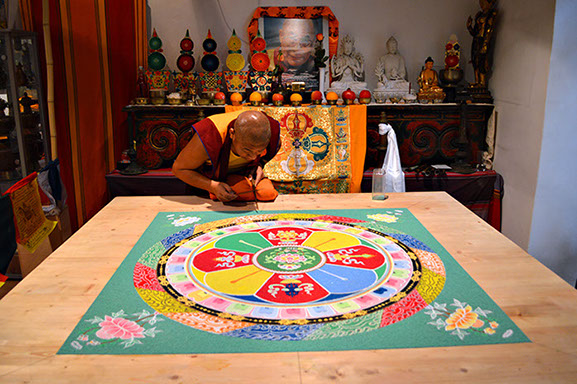
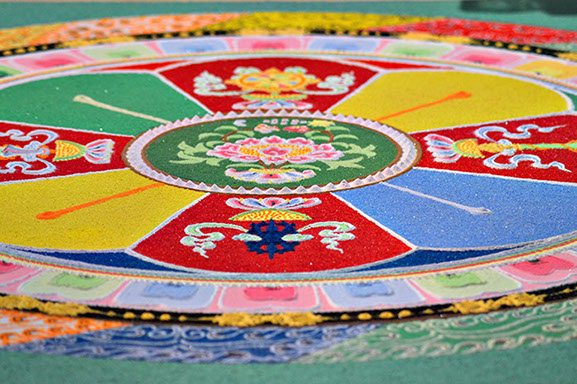
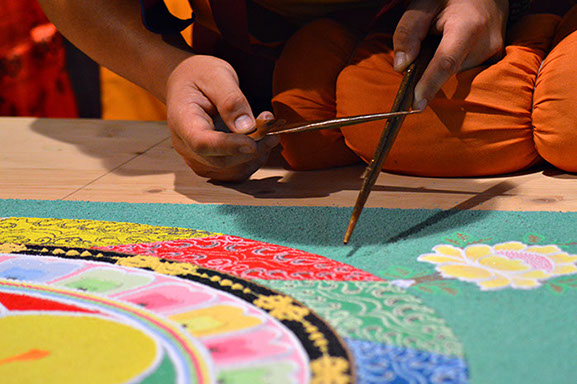
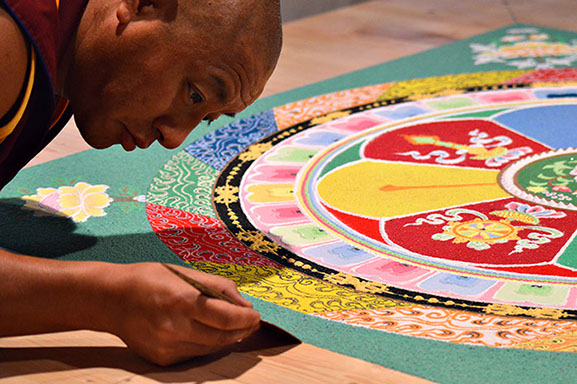
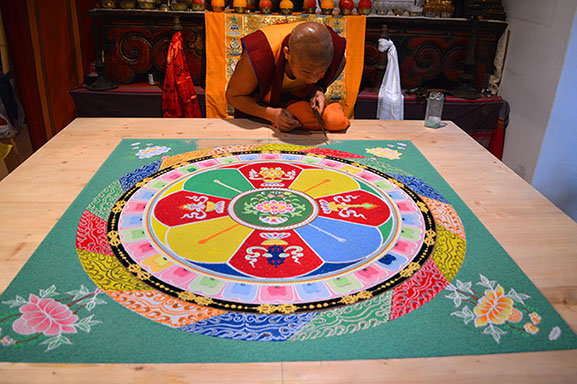
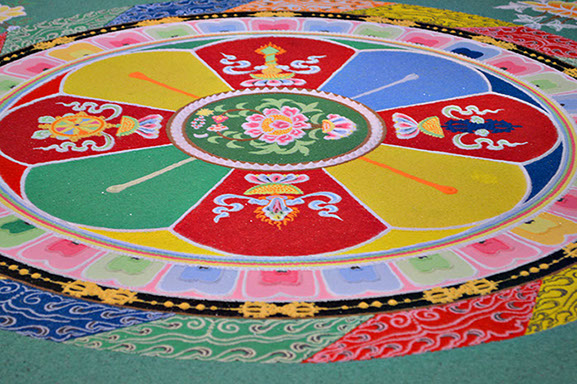
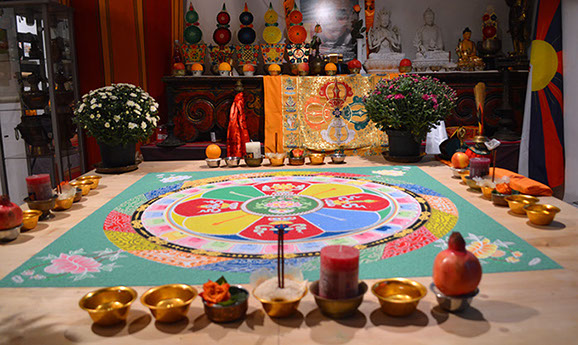
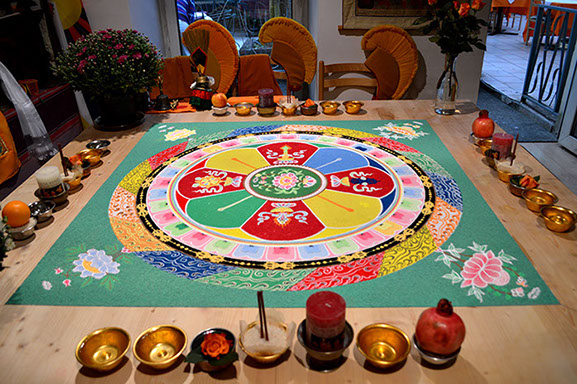
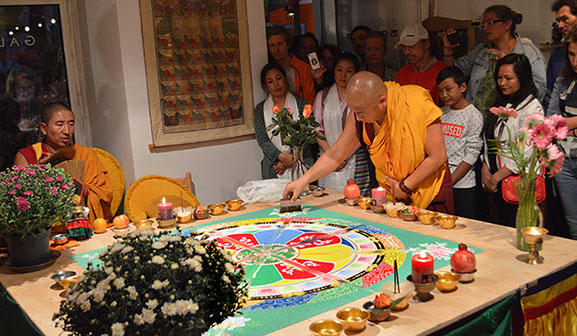
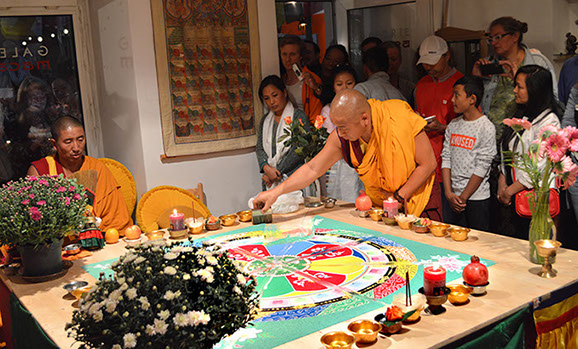
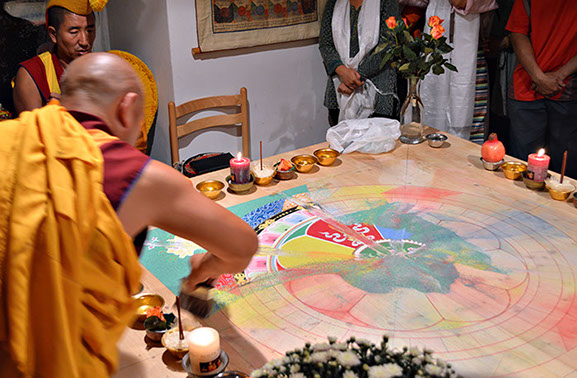
30 - 30
<
>
Sand Mandala
Vienna, Austria 2014
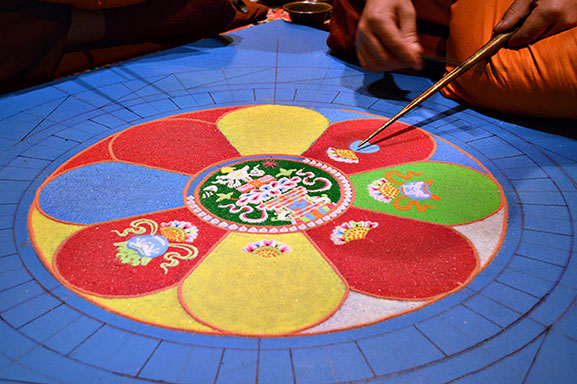
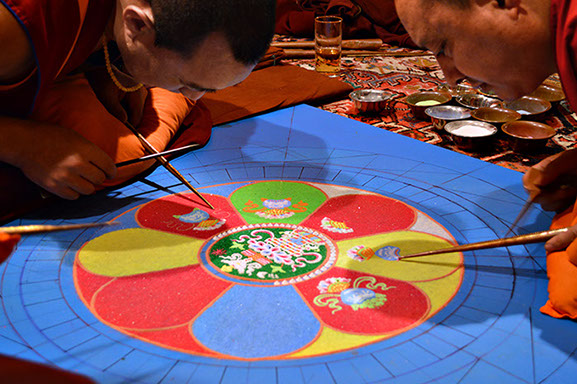
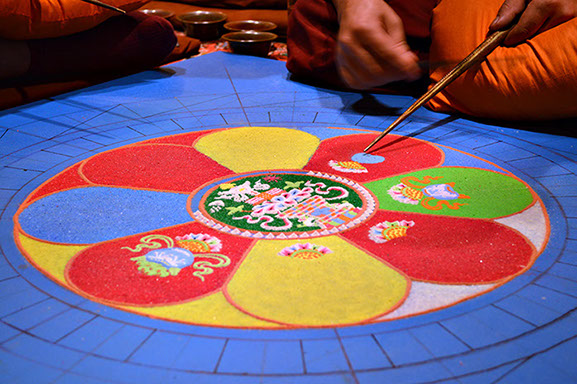
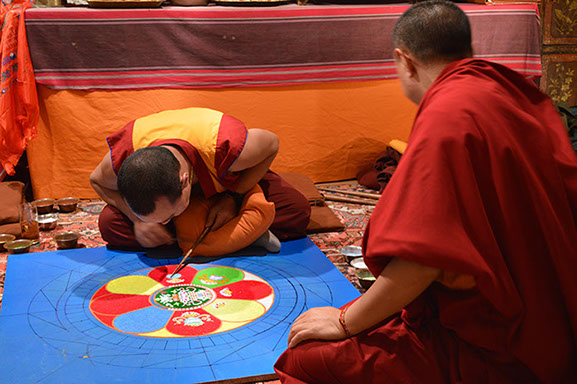
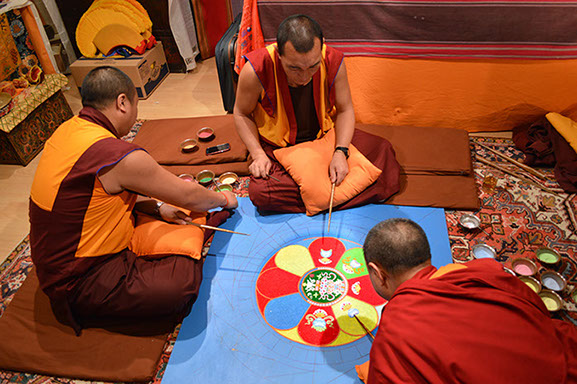
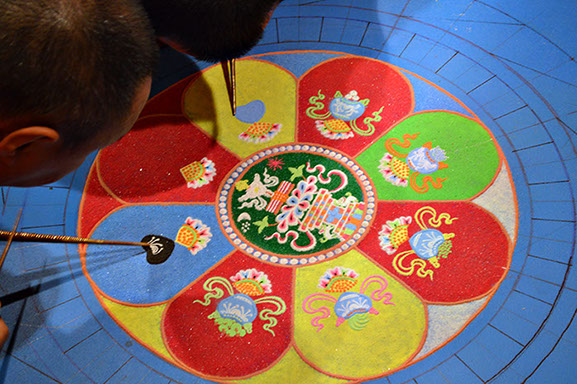
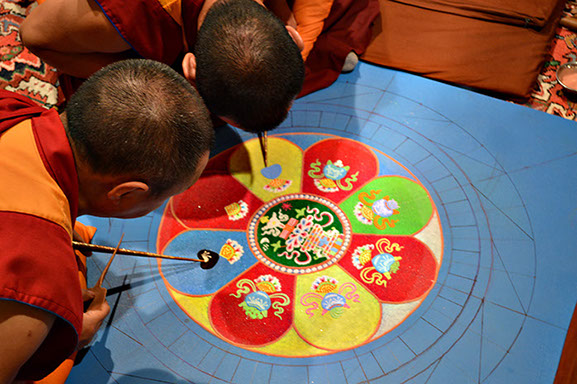
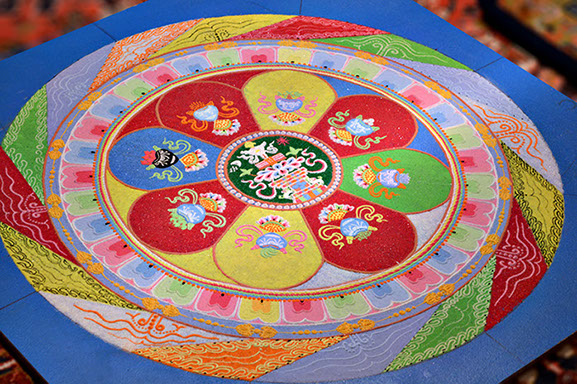
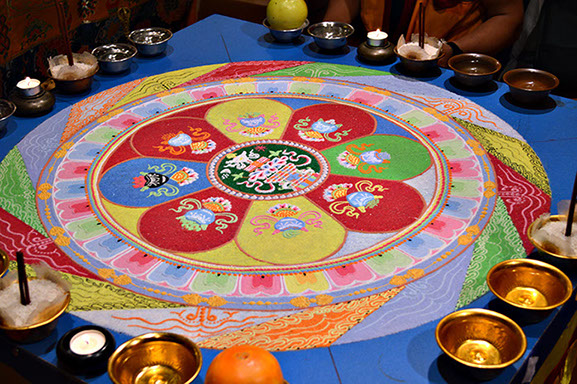
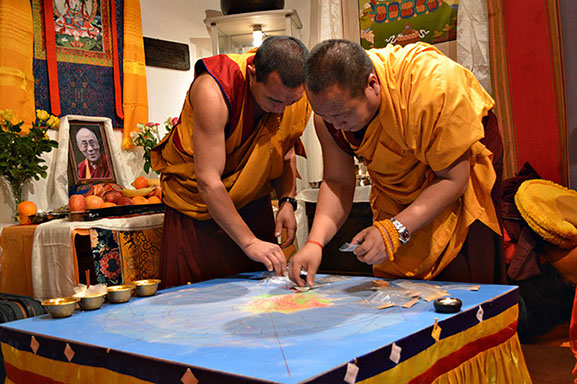
10 - 10
<
>
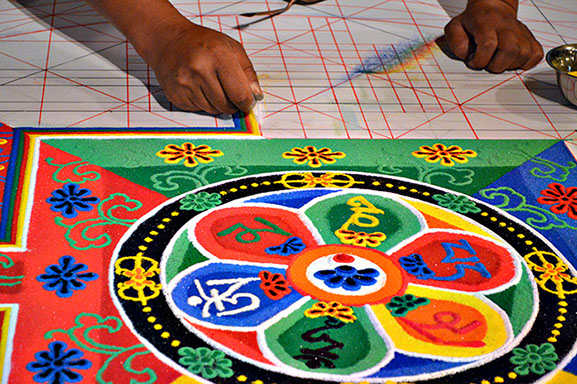
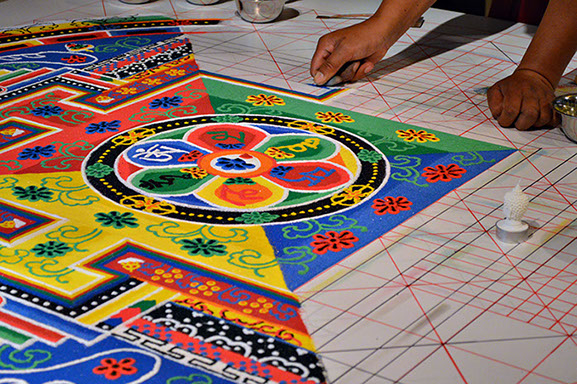
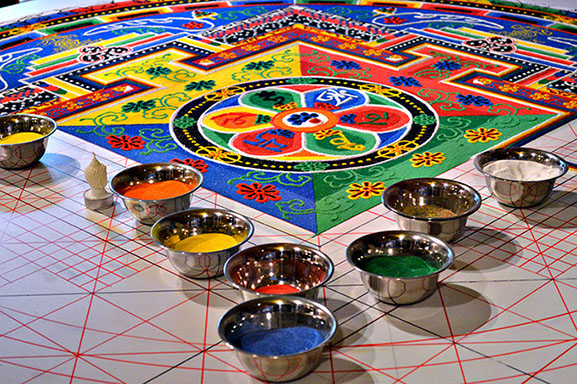
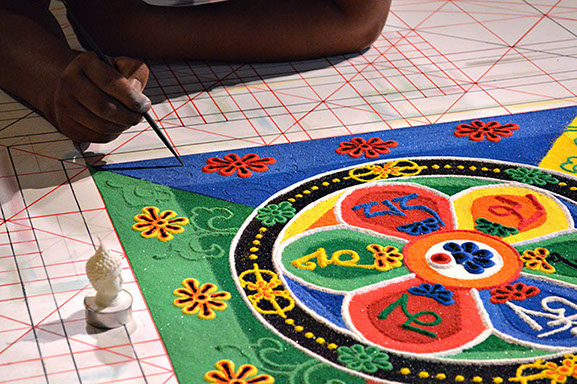
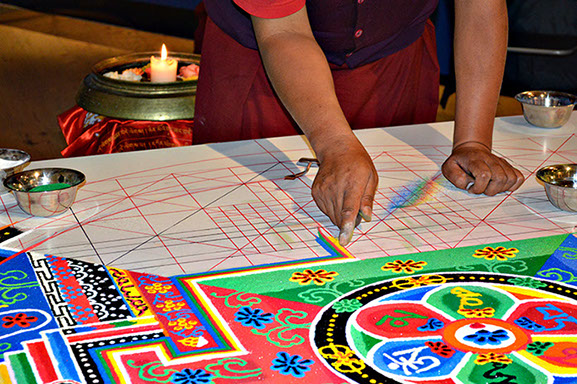
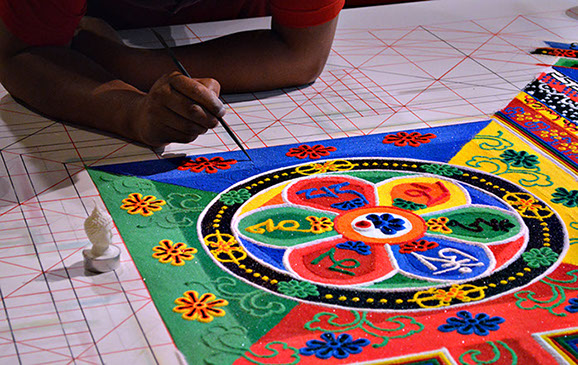
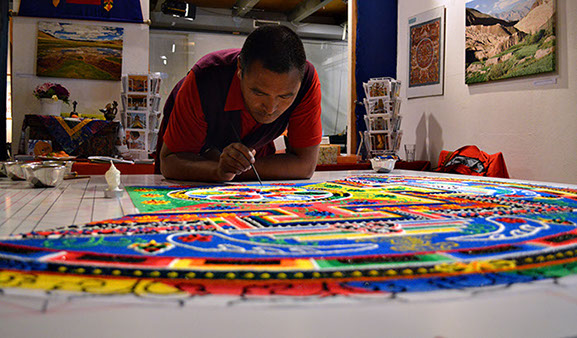
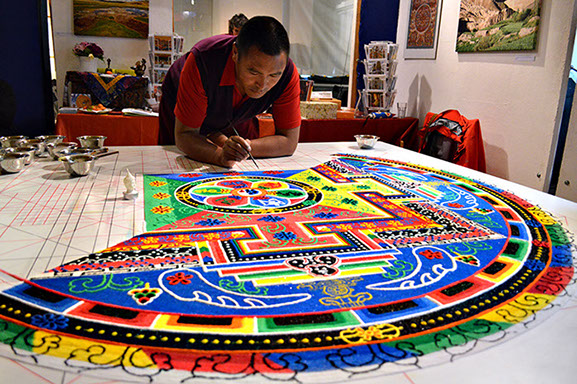
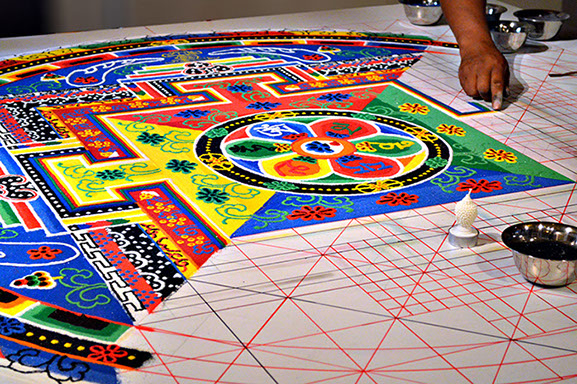
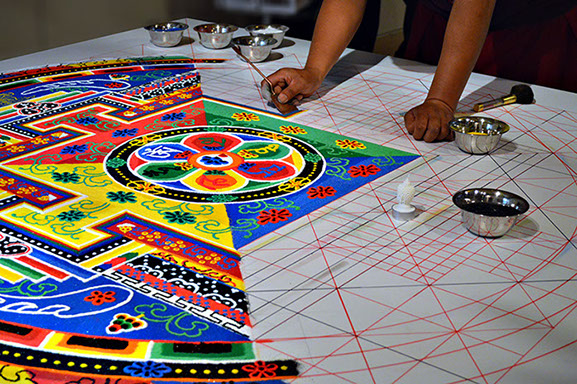
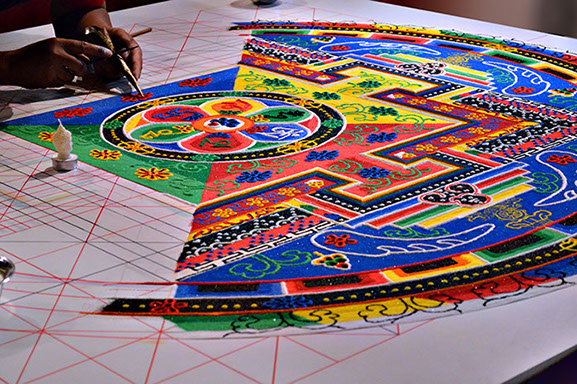
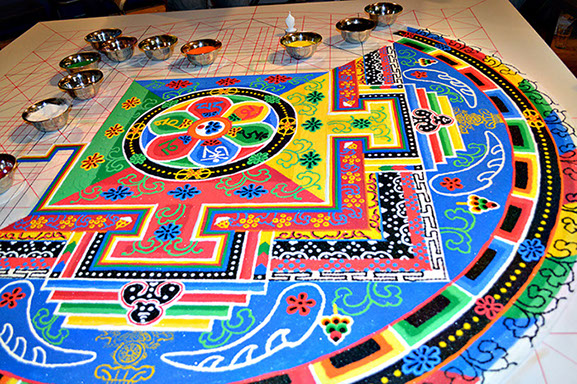
12 - 12
<
>
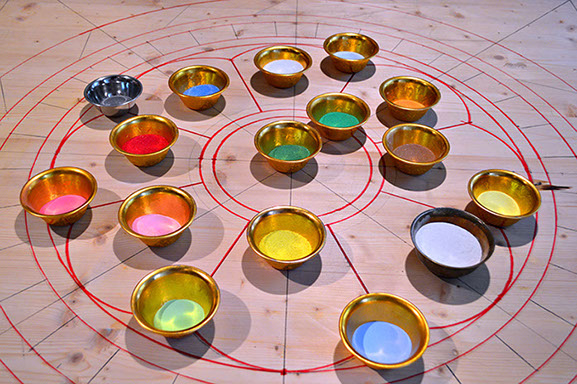
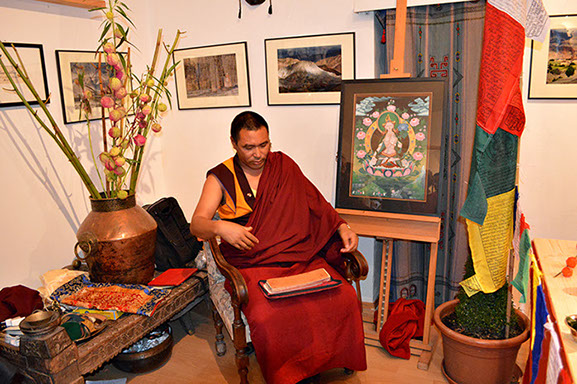
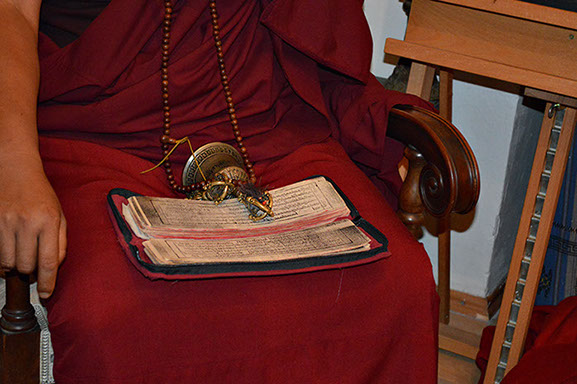
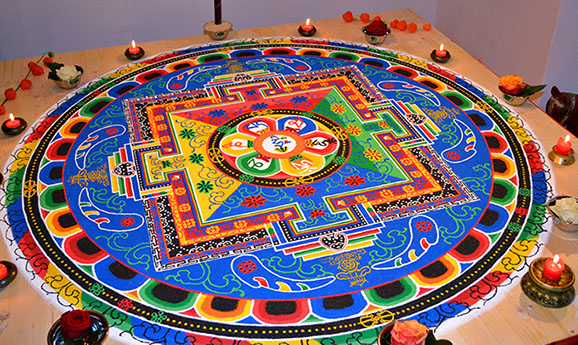
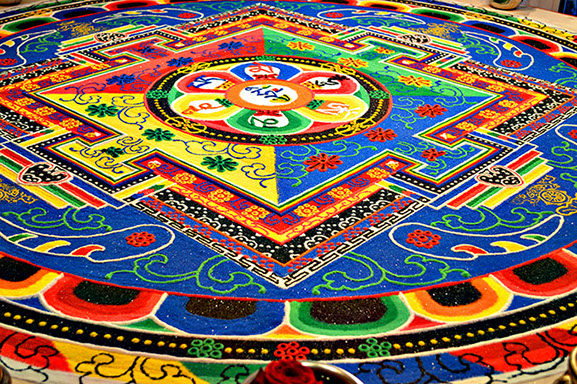
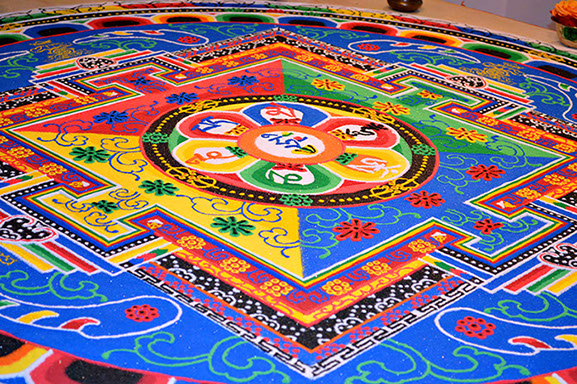
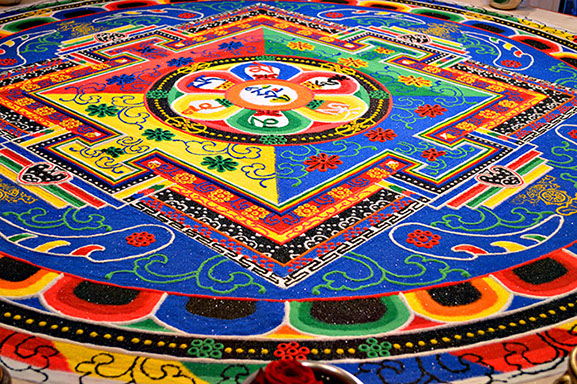
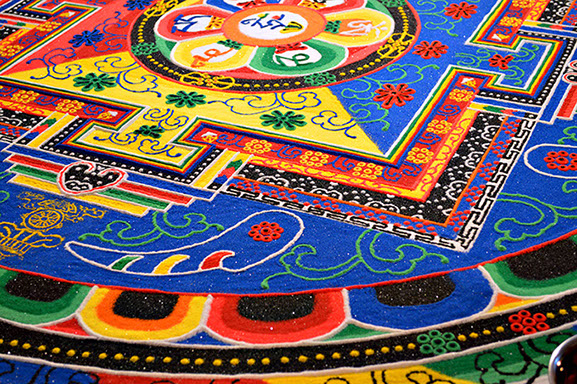
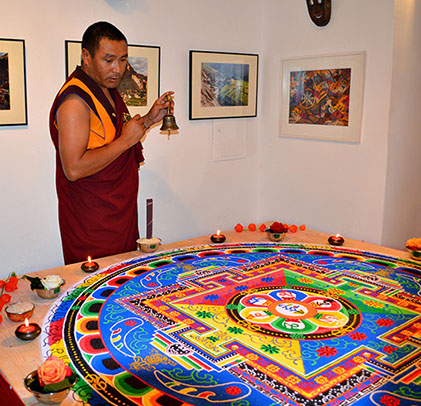
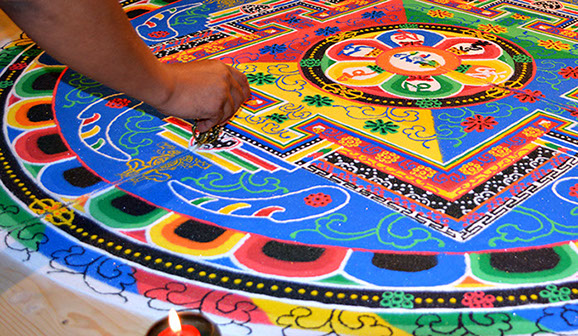
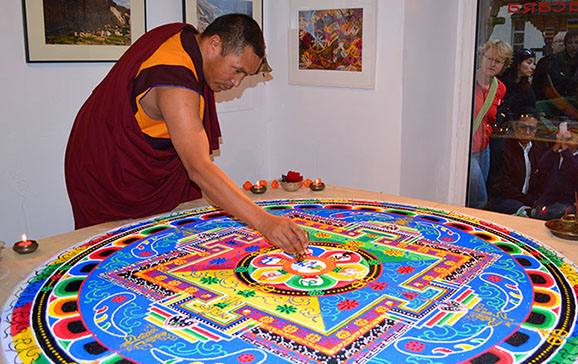
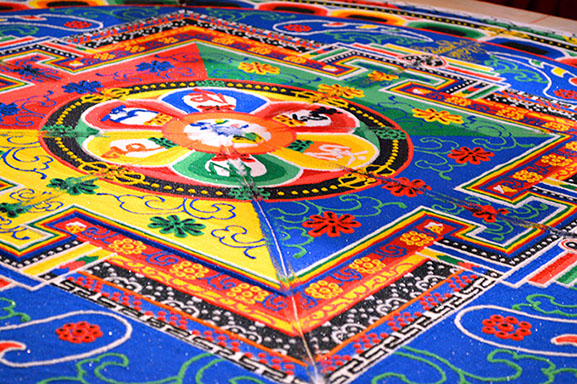
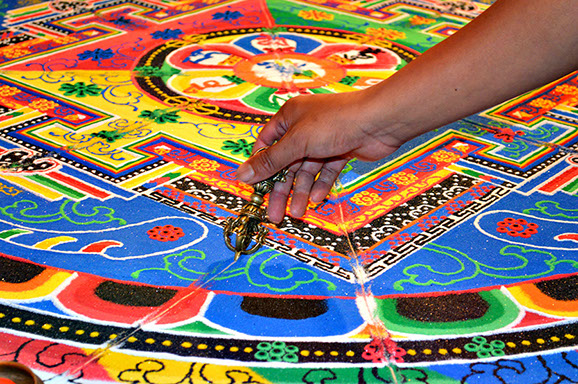
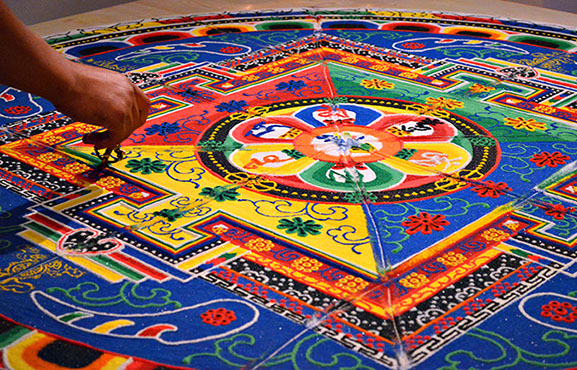

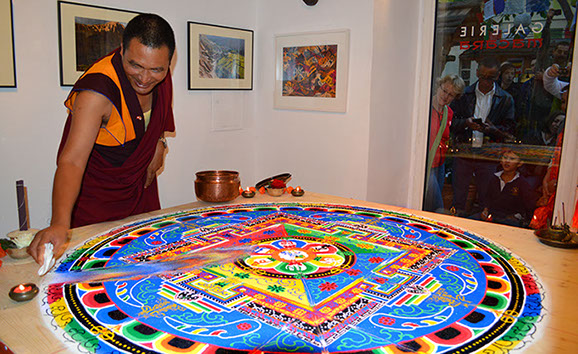
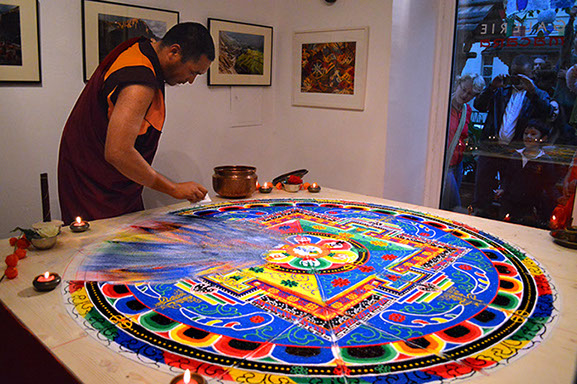
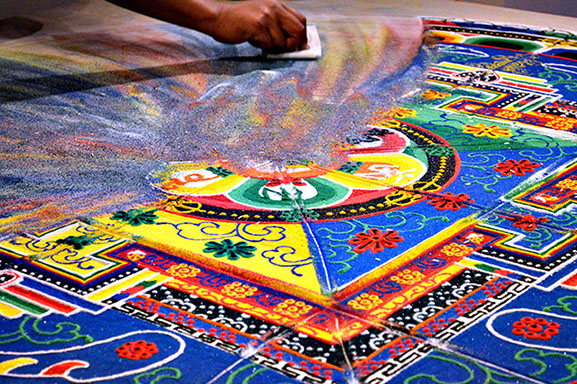
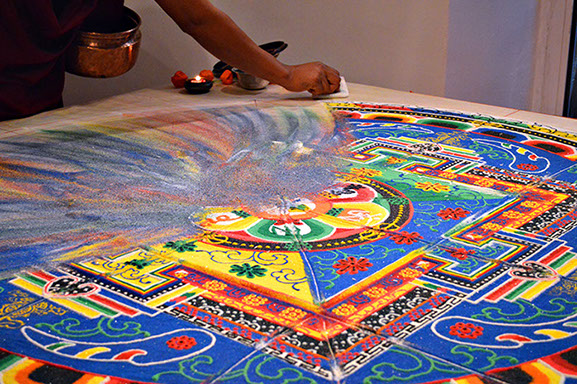
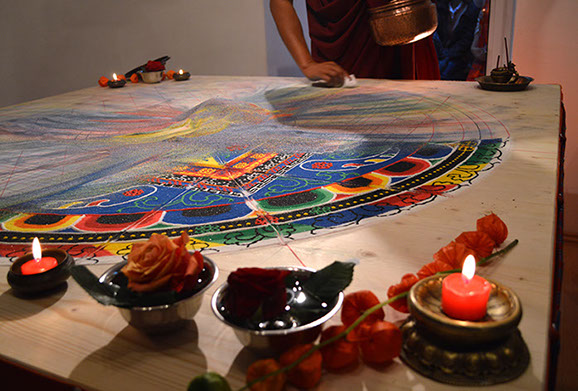
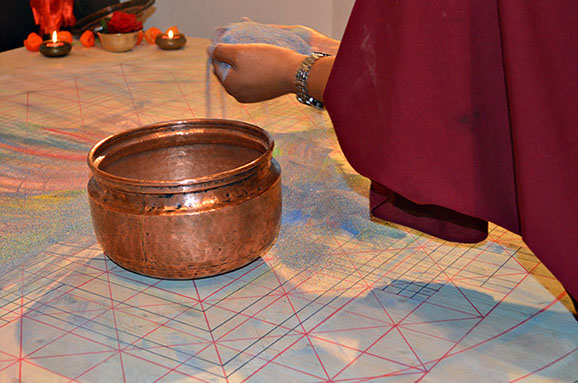
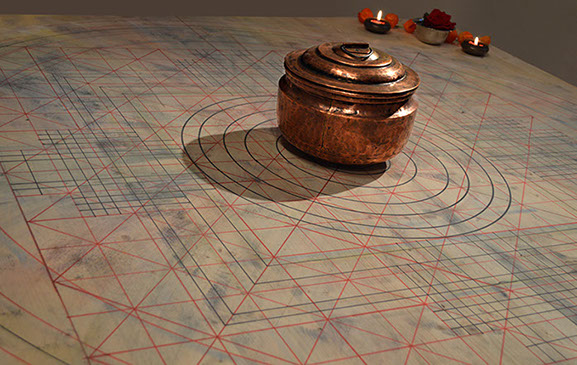
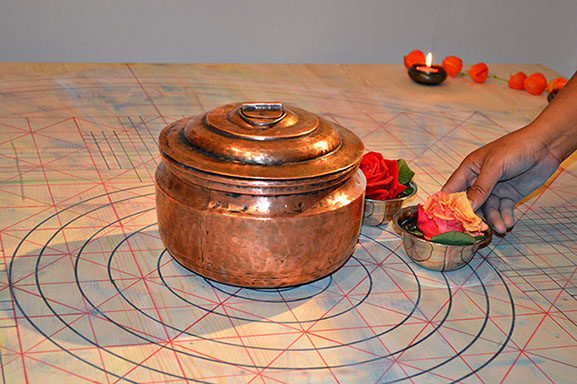
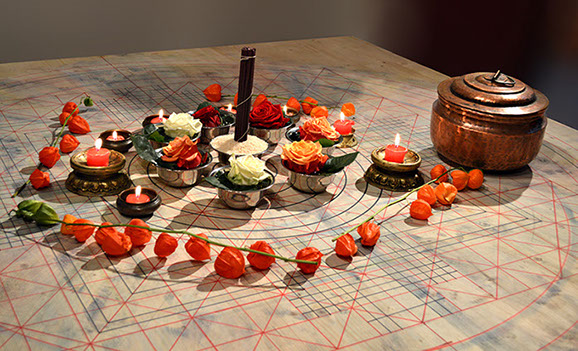
17 - 24
<
>
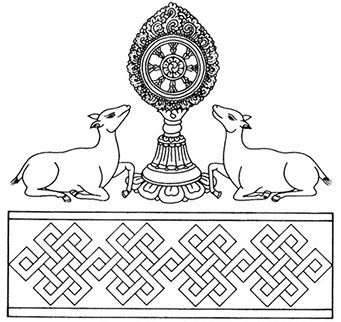
info@bella-volen.com
+43/699 132 29 826, Vienna, Austria

© Copyright Bella Volen 2022
BELLA VOLEN Gallery
Downtown Vienna
Landesgerichtsstraße 6, 1010 Wien
Opening hours:
Tuesday 11.00 AM - 6:00 PM
Wednesday 11.00 AM - 6:00 PM
Thursday 11.00 AM - 6:00 PM
Friday 11.00 AM - 6:00 PM
Saturday 11.00 AM - 6:00 PM
Sunday & Monday open with an appointment
On some evenings & weekends there will be special events, lectures, workshops.
BELLA VOLEN Galerie
Im Zentrum von Wien
Landesgerichtsstraße 6, 1010 Wien
Öffnungszeiten:
Dienstag 11.00 - 18:00
Mittwoch 11.00 - 18:00
Donnerstag 11.00 - 18:00
Freitag 11.00 - 18:00
Samstag 11.00 - 18:00
Sonntag & Montag nur für ausgemachte Termine.
An manchen Abenden, oder Wochenenden gibt es Sonderveranstaltungen und Workshops